

An Extensive Guide to TSA-Approved Locks: Most Commonly Asked Questions
Ensuring the security of your belongings during your travel is always a top priority, and whenever we talk about travel security, the first thing that comes to mind is the TSA-approved lock . TSA locks are not only popular in the United States but also around the world, so understanding the basics of TSA-approved locks is essential for every type of traveler.
We understand that you might have plenty of questions in your mind about TSA lock, like: What is TSA lock? Do you need a TSA lock when you fly? How do you reset your TSA lock? How do you reset it when you forget the combination? What is the best TSA lock? and much more.
So don’t worry at all. In this extensive guide, we’ll explain to you everything about TSA locks —no fancy jargon, just straightforward answers to any questions you might have. So let’s go into detail to make sure you know everything and travel stress-free.
Table of Contents
What is a tsa lock.
A TSA lock stands for Transportation Security Administration lock. This is a special type of lock that is designed in such a way that if, for security reasons, TSA agents need to inspect your luggage, backpack, or anything else, they can inspect it.
The cool thing about TSA-approved locks is that they let TSA agents inspect your luggage without breaking the lock. This is because TSA agents have a master key that helps them open any type of TSA lock. Once they inspect the luggage, they can relock it easily without any issues.
Once you secure your belongings with the help of a TSA-approved lock, no one can access your luggage except you and TSA agents. In this way, TSA locks help maintain both security and the integrity of your lock, making you stress-free throughout the entire journey.
What does a TSA lock look like?
There are various types of TSA locks for different purposes and with different designs. You might be wondering how to recognize them. Don’t worry, that’s really simple; let me explain how. Every TSA lock comes with a small, red diamond-shaped logo printed and engraved on it.
No matter what type of TSA-approved lock you’ve got or which brand it is, you’ll see a small red diamond-shaped logo on each of them. Sometimes you might also see the words “Travel Sentry” alongside the red diamond logo.
Now you might be wondering, What does Travel Sentry mean? No worries; Travel Sentry is an organization that sets and manages the standards for luggage security. They’re specifically known for setting the standards for TSA-approved locks.
It ultimately plays a big role in creating a modern-equipped system to balance the security of travelers’ belongings during air travel.
This red diamond logo is a universal symbol that especially helps TSA recognize that this is a TSA lock and that they can open it with their master key.
Do TSA locks come with a key?
No, TSA-approved locks do have keyholes, but they generally don’t come with keys. Instead, they typically come with a combination mechanism. So a TSA lock comes with two mechanisms: one is a combination mechanism, and the other is a key mechanism.
You don’t get a key with the TSA lock because travelers are supposed to unlock the lock with the help of a combination. The keyhole is usually given to TSA agents so that they can use the master key to unlock and inspect your belongings.
However, let me tell you, there are multiple stores offline and online, including Amazon, through which you can get your own master key. With the help of that master key, you too can open your lock with the help of a keyhole.
Do I need a TSA-approved lock on my luggage to fly?
No, you don’t really need a TSA lock; you can use any other lock instead of a TSA-approved lock, and TSA doesn’t have any problem with it.
But it’s highly recommended that you use a TSA-approved lock, especially if you’re traveling within or to the United States or on an international flight . This is because TSA locks allow you to secure your belongings, and while passing through security checks, you don’t have to worry if TSA agents decide to inspect your luggage.
A TSA agent can unlock a TSA lock with the help of their master key without breaking or damaging it, but on the other hand, if you have any other type of lock—your backpack, suitcase, or any other bag—and TSA decides to inspect it, they’ll simply break it without letting you know.
Ultimately, you leave your luggage unlocked, and you won’t even be compensated for your broken lock, which in the end makes your journey stressful.
If you come across a situation where you don’t have any locks and still want to secure your belongings, then you should read this extensive guide on how to lock a suitcase without a lock.
Where can I buy a TSA-approved luggage lock?
You can buy TSA-approved locks at several places. I’m guiding you through some of the best places you can get TSA-approved locks from. You can choose any place that suits you the best.
Online Retailers
There are plenty of websites, like Amazon, Walmart, and eBay, that offer different types of TSA-approved locks. The best part of them is that you can read customer reviews and compare prices, which will ultimately help you choose the perfect piece of TSA lock for you and avoid ending up with the wrong lock.
Another benefit of online retailers is that you get a wide range of TSA locks with different mechanisms, styles, and colors, and because of competitive pricing, you get the best TSA-approved lock at a very affordable price, all from the comfort of your home.
Luggage and Travel Accessories Store s
Those shops that specialize in luggage and travel accessories often stock TSA-approved locks. You can easily find any nearby store and get TSA locks from there. The good thing about luggage stores is that you can physically inspect the lock, and if it satisfies you, you can go with it.
Another good thing is that it’s quick and faster than online retail stores because deliveries usually take 2–3 days, but when it comes to luggage stores, you can get it instantly without waiting for long.
Airport Shops
This is the only option if you forget to take a TSA lock with you, and there are some airports that have shops that sell travel accessories and other essentials, including TSA-approved locks. You can get it from there as well.
But the downside is that you might have to pay a lot more compared to online retailers because things get expensive when they are sold at airports for several reasons. So it’s recommended to have one before you leave for your trip.
What are the best TSA-approved luggage locks?
There are plenty of good options available on the market, and we’re sharing some of the best TSA-approved locks for your luggage. These are the best TSA locks, and you can choose any of them without thinking for a second.
We assure you that if you opt for anyone below, this will prove to be the best investment for your entire travel life.
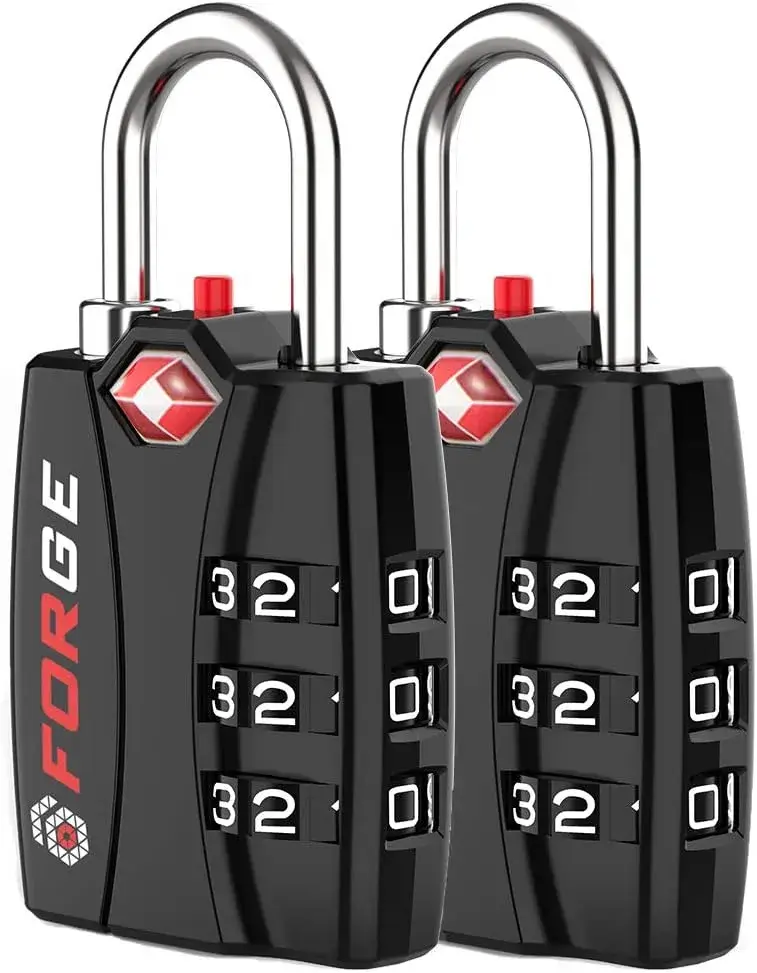
Forge TSA-Approved Combination Lock
- Sturdy Zinc Alloy Body
- Steel Shackle
- Inspection Indicator
- Shiny, Visible Dials
- Ensures Relock After Inspection
- Modern And Stylish Design
- Unconditional Lifetime Guarantee

Forge TSA-approved Cable lock
- Robust Zinc Alloy Body
- Tightly-braided Braided cable
- Easy to Thread through Zippers
- Unique and Modern Aesthetics
- Multiple Color Options
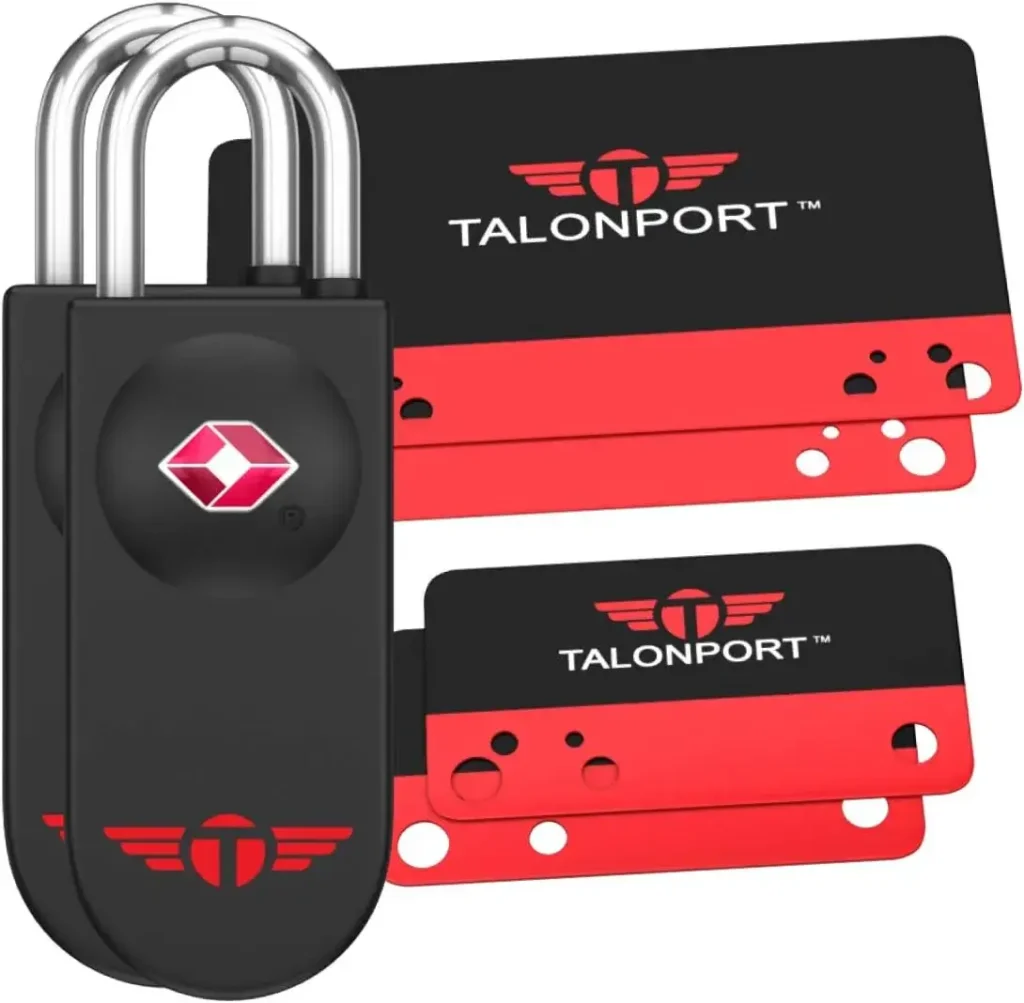
Talonport Keyless TSA-approved Lock
- Card In Two Different Sizes
- Easy to Use
- Innovative and Sleek Design
- No Combination Hassle
- Lifetime Guarantee if Lock Gets Cut
- Free Replacement if you lose your card
If you want to learn more about the best TSA-approved luggage locks, you can take a look at this detailed guide.
What is the benefit of using a TSA-accepted lock?
There are plenty of benefits to using the TSA-accepted lock; let’s take a closer look at some of the important ones.
- Prevents lock damage: The most important thing, as I explained above, is that when you have a TSA lock on your luggage and a TSA agent needs to inspect it, they can simply unlock your TSA lock with their master key without breaking or damaging your lock. If you’ve got a non-TSA-approved lock, they’ll simply break it and won’t be able to relock it.
- Quick and Convenient Security Process: Another benefit of the TSA-approved lock is that it makes the security procedure quick and convenient. In cases of inspection, TSA agents quickly unlock the lock, inspect it, and then relock it without much hassle or inconvenience.
- Global Recognition: TSA locks come with a red diamond logo on each lock, which is not only recognized in the United States but throughout the world, which means you’re totally secure whether you travel within or to the U.S. or any other country.
- Provides peace of mind: For me, the most important thing during travel is peace of mind. Knowing that your belongings are secure with a TSA lock that can be opened and relocked by authorized personnel will ultimately provide you with peace of mind, so you’ll be able to enjoy the entire journey.
- Versatility: TSA locks are available in plenty of designs, styles, and types, and different types of TSA locks are perfect for different purposes, so you can use them on your luggage, suitcase, or backpack.
There are some more benefits that you get from TSA-approved locks, but I’ve mentioned the most important ones.
How do I set or reset the TSA lock?
Setting or resetting a TSA-approved combination lock is a simple, step-by-step process that you can implement in a few minutes.
I’m assuming that you bought a new piece of luggage and want to set your own code, or you’ve already set a combination and want to reset it with a new combination. If yes, then in both cases, just follow the process explained below to set or reset a TSA-approved lock on your luggage:
- Lay down your suitcase or bag on the ground or any flat surface in such a way that the lock faces you.
- If you’ve recently bought luggage, the default code is either 0-0-0 or 9-9-9. If you’ve already set a code, then consider that current code as your default code.
- First, line up the dial to your default code.
- Take a pen, pencil, or any other pointed object and press the reset button , which is on your TSA lock.
- If you don’t know what a reset button looks like, let me tell you that there will be a small pin-sized button that might be in either a circular or square shape.
- Don’t worry; if the button stays pressed, it’ll automatically come back to its normal position once you successfully set the lock.
- Now set your desired combination code by rotating the dials.
- Once you set the dials according to your desired combination, slide the lever to confirm the new combination.
- As soon as you slide the lever, the reset button will come back to its normal position. If it happens, that means you’ve successfully set your own code.
In this way, you can set or reset the code on your luggage. If you want a detailed guide on how to set and reset the TSA lock, you can read this extensive guide.
How do you reset the TSA lock if you forget the combination?
Similar to the lock jamming issue, forgetting the combination of TSA locks is a very common problem among travelers; almost every traveler faces this forgetting lock issue at least once in their lives. Whether you have Samsonite, Delsey, American Tourister, Away, or any other brand, you can suffer from this problem.
So let’s talk about the solution.
There are 4 to 5 ways through which you can recover your combination code and unlock your TSA007 suitcase or any other bag. These methods include:
- Guessing the lock combination
- Dial Grooves Method
- Master Key Method
- Contact Customer Care
- Seeking Help from a Professional Locksmith
If you want to learn about these methods and solve this problem, you should read the extensive guide on how to unlock Samsonite luggage when you forget the code.
What does TSA mean?
TSA stands for Transportation Security Administration. The TSA is an agency of the United States Department of Homeland Security. This agency is responsible for ensuring the safety and security of the transportation system in the United States.
The primary purpose of the TSA revolves around aviation security, and the agency ensures that passengers and their belongings are screened and inspected before leaving the airport. The main purpose behind this process is to prevent any potential harm or threats and keep transportation more secure.
So whenever you see the term “TSA” at the airport, that means that you’re in good hands and can enjoy secure travel.
How does the TSA open a TSA lock?
The TSA opens a TSA lock with the help of a master key. TSA agents possess different types of master keys, and these keys are specially designed in such a way that they can unlock all the TSA locks.
When TSA agents decide to inspect the contents of any luggage, they simply insert the key into the keyhole of the TSA lock and rotate it like you do with a normal lock. This action opens the TSA-approved lock without asking for the traveler’s combination.
Once they inspect the belongings, they relock the luggage with the help of the same master key.
Closing Thoughts
We’ve covered everything about the TSA lock and tried to handle it, especially the most frequently asked questions. Whatever question you have in mind about lock, we hope you will find the answer in this helpful guide.
But if you still have any questions with regard to TSA lock or have any suggestions for us to improve, please do let us know in the comment section below so that we can help each other and grow in our lives. We’d love to hear from you.
Thanks for reading.
This is Joseph Mark, a passionate traveler who loves exploring different parts of the world. Along with traveling, I always like spending time reading great books and discovering new ideas. I strongly believe that building good relationships with great people always contributes to personal and professional life.
Similar Posts
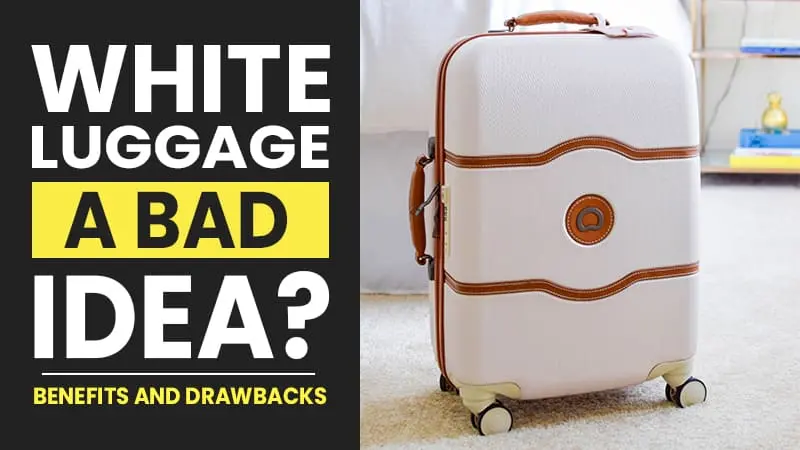
Is white luggage a bad idea in 2024? Pros and Cons of White Suitcase
Are you looking for a piece of new luggage but feeling unsure about whether choosing white luggage is a bad idea? Do you wonder if white luggage really gets dirty? Are you tired of struggling…
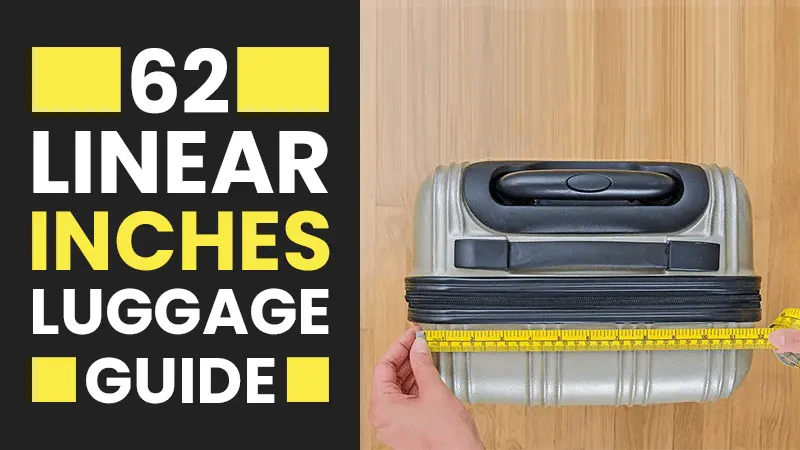
What Are 62 Linear Inches Luggage? Step-By-Step 2024 Guide
If you’ve come across the term “62 linear inches” and are worried about what it exactly means and how to ensure your luggage meets this 62 linear inches requirement, worry not! This article has covered…

What Is Tumi Tracer? (How to Register It and How does it Work?)
In the hustle of travel, losing luggage is a universal problem. According to the report, there are thousands of suitcases that disappear every year. Have you ever lost your luggage and felt that travel headache?…
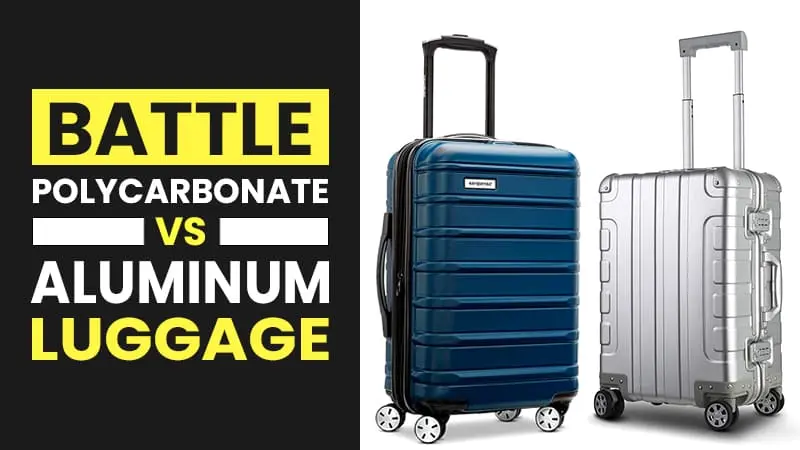
Polycarbonate vs Aluminum Luggage Which Is Better for You?
When it comes to choosing extra-durable luggage for your travels, there are two types of materials that come to mind: polycarbonate and aluminum. You may be confused about which one to go with. Should you…
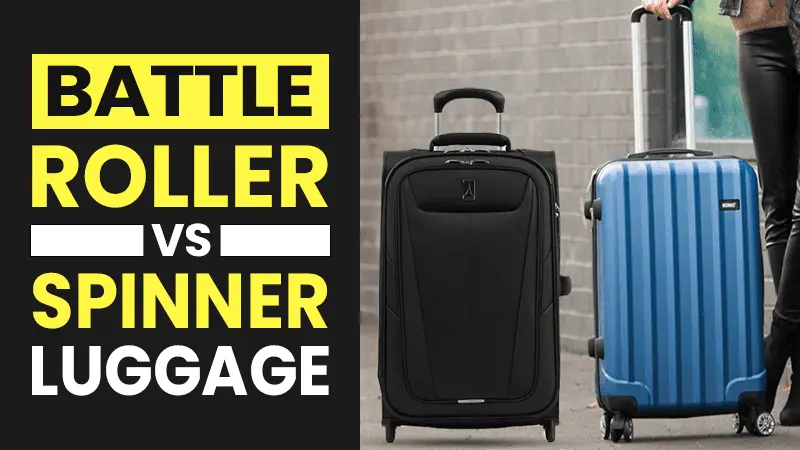
Rollaboard vs Spinner Luggage: Which One Is Perfect for You?
Are you looking for a piece of luggage but unable to decide which one you should get—a rollaboard or a spinner? A 2-wheel or 4-wheel suitcase? If these are the things on your mind, you’re…
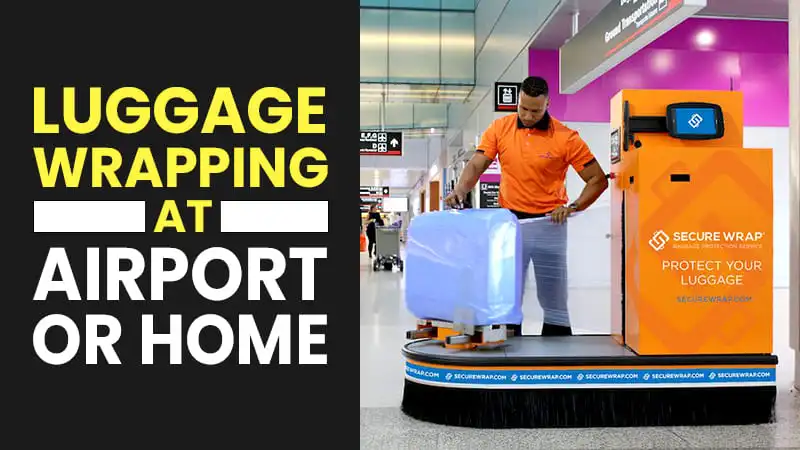
Can I Wrap Luggage in Plastic at the Airport or at Home?
Traveling is a beautiful experience, but one of the biggest concerns that many travelers have is their luggage’s safety during travel. One of the few frequently asked questions by travelers is whether they can wrap…
Leave a Reply Cancel reply
Your email address will not be published. Required fields are marked *
Save my name, email, and website in this browser for the next time I comment.
We collect cookies to analyze our website traffic and performance; we never collect any personal data.
For more information, please visit our Privacy Policy
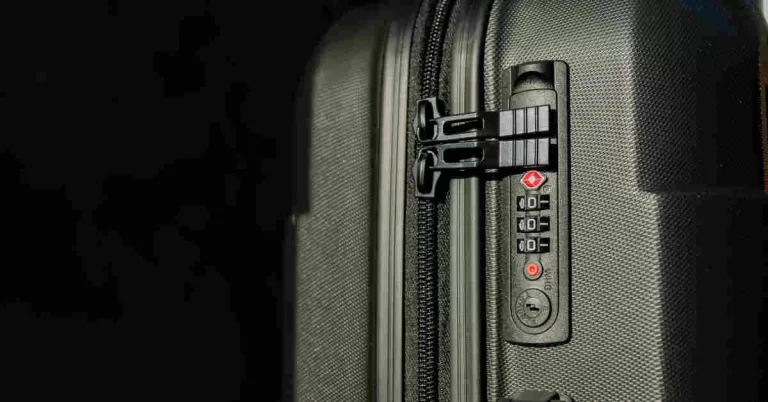
The Ultimate Guide to Luggage Locks
- October 22, 2023
- Luggage Accessories
Luggage locks are an important accessory when traveling, as they can provide security and peace of mind when you’re checking your bags or leaving them in a hotel room. But with so many different types of luggage locks on the market, it can be tough to figure out which one is right for you.
In this post, we’ll explore the different types of luggage locks, highlighting each type’s benefits and drawbacks. Then we’ll give you some tips on how to choose the best lock for you.
Finally, we’ll conclude the post with a discussion on if you should use a luggage lock to lock your baggage when checking in .
Disclosure: Some of the links below are affiliate links. This means that, at zero cost to you, I will earn an affiliate commission if you click through the link and finalize a purchase.
Cons of Using a Combination Luggage Lock
Cons of using a keyed lock.
- What is Travel Sentry?
Cons of Using a TSA Approved Lock
Cons of using a smart lock, cons of using a biometric lock, cons of using an integrated tsa lock, what is a luggage lock.
A luggage lock is a small lock that you use to secure a suitcase or other type of luggage. It typically consists of a small metal body with a locking mechanism and a shackle or cable that can be passed through your bag’s zippers and then locked in place. Luggage locks are typically small and lightweight, making them easy to carry and use while traveling. They’re used to prevent unauthorized access to the contents of your bag and to deter theft.
The way that the locking mechanism works can vary. Some luggage locks use a combination system, while others require a traditional key. There are also more advanced mechanisms, including electronic or biometric systems that can provide a higher level of security.
Some luggage locks are TSA-approved . This means that TSA agents can unlock your bag with a universal key to examine its contents, without damaging the lock.
Types of Luggage Locks
There are several types of luggage locks available on the market, each with its own set of features and benefits. Here’s a guide of the most common types of luggage locks, to help you choose the right lock for your needs:
Combination Locks
Combination locks are the most popular type of luggage lock, as they don’t require a key and can be easily opened with a combination of numbers.
Luggage combination locks typically consist of a small metal body with a combination dial on the front and a shackle on the back.
To use the lock, you pass the shackle through a pair of your bag’s zipper pulls and then secure the shackle to the lock body. Once locked, you randomly change the combination wheel numbers to prevent the lock from being opened.
How to Set Up a Combination Luggage Lock
To set the code on a luggage combination lock, you typically follow the following steps:
- Open the lock by pressing a button or pulling on a lever. This will release the shackle and allow it to be removed from the lock body. Usually, you set the combination to all zeros to open a new lock.
- Turn the wheels to set the desired combination. Each wheel has a series of numbers, and you can set the code by aligning the desired numbers with a marker or window on the lock body.
- Close the lock by pushing the shackle back into the lock body and releasing the button or lever.
Please note that the method of setting a combination lock may vary, depending on the specific model. You can refer to the instructions that came with your lock for more information.
To unlock the lock, you simply need to align the combination dials with the correct code and then press the button or pull the lever to release the shackle. Some luggage combination locks also have a key override, which allows you to open the lock with a key in case you forget the combination.
Pros of Using a Combination Luggage Lock
- You don’t have to worry about losing a key: With a combination lock, you don’t have to worry about misplacing a key or having it copied by someone else. This can be especially convenient if you’re traveling and don’t want to have to keep track of a small key.
- They’re generally easier to open: Combination locks can be easier to open than traditional keyed locks, especially if you’re in a hurry or under stress (e.g., running to catch a flight).
- They are customizable: Combination locks allow you to set your own combination, which means you can choose a combination that is easy for you to remember.
- Can be opened by anyone who knows the combination: If you’re traveling with someone else, they will be able to open the lock as well without having to carry a separate key.
- You need to remember the combination: If you forget your combination, you won’t be able to open your luggage.
- They may be less secure: The combination can potentially be discovered by someone seeing you entering it, or by someone trying different combinations until they find the right one.
- They may be less durable: Combination locks may be more prone to wear and tear over time, as they rely on mechanical components that can break or become damaged. This can be a problem if you’re using the lock often or if you’re traveling to rough or challenging environments.
- Complexity: Combination locks can be more difficult to use than key locks, especially for people who aren’t comfortable with manipulating the combination wheel or who have difficulty remembering numbers.
Keyed Locks
Keyed locks are another common type of luggage lock. These locks require a key to open, which means that only the person with the key can access the luggage.
Keyed luggage locks are the simplest type of lock to use. All you need to do is insert the key into the keyhole and turn it. You can then open the lock by pulling on the small metal latch or shackle.
To close the lock, you simply push the latch or shackle back into the lock and turn the key to lock it. It doesn’t get much simpler than that.
Pros of Using a Keyed Lock
- Security: Keyed luggage locks can offer a higher level of security compared to combination locks, which can be opened by anyone who knows the combination. With a keyed lock, only the person who has access to the key can open the lock, which can help prevent theft.
- Durability: Keyed luggage locks are often more durable than combination locks because they have fewer moving parts, which means they are less likely to break or malfunction.
- Easy to use: Keyed luggage locks are easy to use – simply insert the key and turn to lock or unlock the suitcase.
- You need to look after the key: One of the main disadvantages of keyed luggage locks is that they require you to keep track of a key. If the key is lost, the lock can’t be opened, which can be very inconvenient, to say the least. However, many keyed locks do come with two keys: if you are traveling with others, you can give the other key to a companion to carry. If you happen to misplace your key, you can use the spare to unlock your bag.
- Cost: Keyed luggage locks can be more expensive than combination locks, depending on its quality.
- Limited access: If someone else needs to access your luggage – for example, if you are traveling with a group and one person needs to access everyone’s luggage – it can be inconvenient to have to use a key. Although a spare key can minimize this issue, it can become problematic if several members of a traveling party require access to the bag. This is where a combination lock comes into its own. The combination can be shared across the group.
- Can be difficult to use: Keyed locks may be more difficult to open if you have limited mobility or dexterity.
TSA Approved Locks
TSA-approved locks are locks that are approved by the Transportation Security Administration (TSA) for use on luggage when traveling by air in the United States.
These locks have a special feature that allows TSA agents to open them and inspect the contents of the luggage using a universal key without damaging the lock.
Pros of Using a TSA Approved Lock
There are several advantages to using TSA-approved locks:
- Security: TSA-approved locks offer an extra layer of security for your luggage, as they are designed to deter theft and tampering.
- Convenience: TSA agents can open and inspect your luggage without damaging the lock, which means you won’t have to worry about replacing a damaged lock or carrying extra locks with you.
- Peace of mind: Knowing that your luggage is secure and can be easily inspected by TSA agents can provide peace of mind when traveling.
- Although designed with the TSA in mind, many other countries use the Travel Sentry system, meaning that you can use your TSA-approved lock internationally.
What is Travel Sentry? Travel Sentry is the name of a company that developed a standard for luggage locks. This standard allows security agencies, such as TSA, to open the lock using a master key, without damaging the lock. It is denoted on luggage with the red diamond logo.
There are also a few potential disadvantages to consider:
- Cost: TSA-approved locks may be more expensive than traditional locks.
- False sense of security: Some people may mistakenly believe that a TSA-approved lock provides additional security beyond what is necessary for the TSA to inspect their luggage. It is important to remember that the primary purpose of a TSA-approved lock is to allow the TSA to access your luggage if necessary, and not to provide additional security beyond that.
- Not as useful when traveling internationally: Not all countries use the Travel Sentry system, meaning that they don’t have access to master keys to unlock your TSA-approved lock. Overseas security services may have to break your lock to access the contents of your bag.
Smart Locks
Smart luggage locks are a type of lock that can be controlled and opened using a smartphone app, rather than a physical key or combination code. These locks offer a number of advantages and disadvantages compared to traditional luggage locks.
Pros of Using a Smart Lock
- Convenience: Smart luggage locks can be opened and locked using a smartphone app, so you don’t have to worry about remembering a combination or carrying a physical key.
- Security: Many smart locks use advanced encryption techniques to protect against hacking and other security threats. Some smart locks also have built-in security features such as tamper alarms and automatic lock-out after a certain number of incorrect passcode attempts. Additionally, some smart locks have GPS tracking that allows you to locate your luggage if it is lost or stolen.
- Cost: Smart locks tend to be far more expensive than traditional locks.
- Dependence on technology: If your phone dies or you lose it, you may not be able to unlock your luggage. Alternatively, if the lock’s battery dies or the lock experiences technical issues, you may not be able to access your luggage.
- Security concerns: While smart locks can provide enhanced security, there is always the risk of them being hacked or compromised.
- Limited compatibility: Some smart luggage locks may only be compatible with certain types of luggage or smartphones.
Biometric Locks
Biometric locks, also known as fingerprint locks, are a newer type of luggage lock that uses advanced technology to unlock.
These locks use biometric features such as fingerprints or facial recognition to unlock, providing a secure and convenient way to access your luggage.
Pros of Using a Biometric Lock
- Very secure: Since every person’s fingerprint is unique, it is nearly impossible for someone to unlock your luggage without your permission. This makes biometric locks more secure than traditional locks, which can be picked or opened with a copied key.
- Convenience: With a biometric lock, you don’t have to worry about remembering a combination or carrying around a key. All you need is your finger to unlock the luggage.
- Quick to use: You can unlock your luggage with just a single touch or scan of your finger. There’s no fumbling around with a key or spending time fiddling with the wheels on a combination lock.
- Cost: Biometric locks are generally more expensive than traditional locks.
- Limited usability: They may not work well for people with disabilities or those who have trouble using their hands or fingers.
- Dependence on technology: Like any electronic device, biometric locks can malfunction or stop working. This could be due to a dead battery or other technical issue, which would prevent you from accessing your luggage.
- Privacy concerns: Some people may be uncomfortable with the idea of a device that stores their personal biometric data (such as their fingerprint) on a device that could potentially be lost or stolen.
Luggage with Integrated TSA Locks
Some pieces of luggage come with locks that are built into the baggage itself.
Pros of Using an Integrated TSA Lock
- Convenience: Built-in locks are already attached to your luggage, so you don’t have to worry about carrying an extra lock or remembering to bring one with you.
- Security: Built-in locks are often more difficult to tamper with or pick than traditional locks, because they are less visible and integrated into the luggage itself. This makes the lock more difficult to break or remove.
- Limited use: A built-in lock can only be used on the luggage it is installed on, so it cannot be used to lock other items.
- Limited options: You are limited to the lock that came with your luggage. The lock may not meet your specific requirements, causing you to use another lock.
- Replacement cost: If a built-in lock is damaged or fails, the entire luggage piece may need to be replaced, which can be more costly than using a separate lock.
Which is the Right Lock for You?
As you can see, you are spoilt for choice when it comes to choosing a luggage lock to protect your baggage.
So, which one do you choose? If you have no preference after reading about the distinct types of locks available, we recommend the following: Unless you have a compelling reason otherwise, we suggest that you either use a TSA-approved combination or keyed lock. Combination locks are more convenient to use, as they don’t require a key, but can be fiddly for those of us who aren’t as nimble with our fingers.
In my opinion, the other lock options are far too expensive to justify the moderate gain in security that they can provide. To be blunt, I think devices such as smart and biometric locks are solutions looking for a problem.
The main function of a luggage lock is to act as a deterrent rather than secure your luggage. For opportunistic thieves, they are more likely to target a bag without a lock before one that doesn’t. If someone is determined to break into your luggage though, a luggage lock will only slow them down. Sometimes all that’s required to open a locked bag is a ballpoint pen !
Also, luggage which has a lock attached can act as a flag (Pick me! Pick me!), suggesting that the luggage has something worth stealing inside.
Should You Use a Luggage Lock?
In my opinion, luggage locks do serve a purpose: to act as a deterrent against opportunistic thievery. If you are traveling by public transport to the airport, walking through the airport, or leaving your bag unaccompanied in your hotel then, by all means, I recommend locking your bag.
When you are checking your bag with your airline, we recommend that you keep your bag unlocked. Firstly, you shouldn’t pack anything in your checked bag that is of significant value – all your valuables and important items should be packed in your carry-on .
An unlocked bag makes it easier for TSA to search your bag quickly physically. Yes, they can use a universal key, but even this takes some time. As we have seen post-pandemic, airports have had challenges with processing checked baggage promptly.
I personally never lock my bag when checking it in. In my decades of air travel, I haven’t had anything stolen from my luggage while it’s been in the custody of an airline (knock on wood – *taps head*).
Final Thoughts
As can be seen, there are many options when it comes to luggage locks. Each type has its own benefits and drawbacks.
Towards the end of the post, we somewhat controversially suggested that it may not be worthwhile to lock your luggage when it’s being checked in. I think that locked luggage can give us a (false) sense of security. Locks aren’t impervious to being tampered with. If someone is determined to break into your bag, they will do it. Outside of check-in , luggage locks do serve a more valuable function.
What do you think? Do you use luggage locks to secure your luggage? If so, what type do you prefer to use?
- Transport Security Administration (TSA)
Hands Off My Suitcase
Related posts.

How to Check Your Car Seat as Baggage

The Best Luggage Scales of 2023

10 Best Travel Accessories to Pack for Your Next Trip
In all of my domestic as well as international travel, I always put lock on my checked-in luggages. I know it won’t provide 100% security but for peace of mind, I do so especially that my luggage contents are important to me 😊. I have been using both keyed and combination locks but there were instances when combination locks are bit stressful to me when I forgot the number combinations. In my personal experience, traditional locks (keyed locks) are more convenient for me and works 100% most of the time (unless I lost its keys which so far didn’t happen to me during my travels. I have not yet tried the biometrics and TSA-approved lock but looking forward to try them in future.
Use of luggage locks is a personal choice for each traveller.
Use of luggage locks when traveling is a personal choice, depending on whether it may or may not provide security. In my personal experiences, I always travel with locked check in luggage, be it domestic or international. It offers me peace of mind knowing that my personal belongings are safe. I use either keyed or number-combinations lock and glad that I haven’t encountered any troubles throughout the duration of my travels.
Comments are closed.
- More from M-W
- To save this word, you'll need to log in. Log In
Definition of sentry
Examples of sentry in a sentence.
These examples are programmatically compiled from various online sources to illustrate current usage of the word 'sentry.' Any opinions expressed in the examples do not represent those of Merriam-Webster or its editors. Send us feedback about these examples.
Word History
perhaps from obsolete sentry sanctuary, watchtower
1608, in the meaning defined above
Phrases Containing sentry
- stand sentry
Dictionary Entries Near sentry
sentinel crab
sentry board
Cite this Entry
“Sentry.” Merriam-Webster.com Dictionary , Merriam-Webster, https://www.merriam-webster.com/dictionary/sentry. Accessed 9 Apr. 2024.
Kids Definition
Kids definition of sentry, more from merriam-webster on sentry.
Nglish: Translation of sentry for Spanish Speakers
Subscribe to America's largest dictionary and get thousands more definitions and advanced search—ad free!

Can you solve 4 words at once?
Word of the day.
See Definitions and Examples »
Get Word of the Day daily email!
Popular in Grammar & Usage
The tangled history of 'it's' and 'its', more commonly misspelled words, why does english have so many silent letters, your vs. you're: how to use them correctly, every letter is silent, sometimes: a-z list of examples, popular in wordplay, the words of the week - apr. 5, 12 bird names that sound like compliments, 10 scrabble words without any vowels, 12 more bird names that sound like insults (and sometimes are), 8 uncommon words related to love, games & quizzes.

Words and phrases
Personal account.
- Access or purchase personal subscriptions
- Get our newsletter
- Save searches
- Set display preferences
Institutional access
Sign in with library card
Sign in with username / password
Recommend to your librarian
Institutional account management
Sign in as administrator on Oxford Academic
sentry noun 1
- Hide all quotations
Earlier version
- sentry, n.¹ in OED Second Edition (1989)
What does the noun sentry mean?
There are six meanings listed in OED's entry for the noun sentry , two of which are labelled obsolete. See ‘Meaning & use’ for definitions, usage, and quotation evidence.
sentry has developed meanings and uses in subjects including
Entry status
OED is undergoing a continuous programme of revision to modernize and improve definitions. This entry has not yet been fully revised.
How common is the noun sentry ?
How is the noun sentry pronounced, british english, u.s. english, where does the noun sentry come from.
Earliest known use
early 1600s
The earliest known use of the noun sentry is in the early 1600s.
OED's earliest evidence for sentry is from 1611, in the writing of Randle Cotgrave, lexicographer.
sentry is of multiple origins. Perhaps formed within English, by clipping or shortening. Perhaps formed within English, by back-formation.
Etymons: English centrinel , centronel , sentinel n. .
Nearby entries
- sentinel-house, n. 1621
- sentinel pile, n. 1910–
- sentinel posture, n. 1625–42
- sentinelship, n. 1643–
- senting, adj. 1572
- sentisection, n. 1889–
- sentition, n. 1865–
- sentoku, n. 1902–
- sentrell, n. 1615
- sentrie, n. 1486–1889
- sentry, n.¹ 1611–
- sentry, n.² 1590–
- sentry, adj. 1486
- sentry, v. 1820–
- sentry-box, n. 1702–
- sentry-fashion, n. 1875–
- sentry fish, n. 1664–
- sentry-go, int. & n. 1852–
- sentry-going, n. 1901–
- sentry lark, n. 1869–
- senture, n. a1400–60
Meaning & use
Barbacane ,..some hold it also to be, a Sentrie , Scout-house, or hole. Garite ,..also, a Sentrie , or little lodge for a Sentinell, built on high. Guerite .., also, a Sentrie , or Watch-tower. Vedette , a Sentrie , or Court of gard, placed without a fort, or campe.
I advised him, that..he would immediately walk to the Deansgate, & from thence to the other Centuries , using his best encouragements to prop up their hearts against any dangers.
Instead of Bulwarks it hath Sentries or Watch-towers.
- tower Old English– A building lofty in proportion to the size of its base, either isolated, or forming part of a castle, church, or other edifice, or of the walls of a…
- bastille c1400– A tower or bastion of a castle; a fortified tower; a small fortress.
- bastillion 1525– A small fortress or castle; a fortified tower.
- cavalier 1562– Fortification . ‘A work generally raised within the body of the place, ten or twelve feet higher than the rest of the works…to command all the…
- commander 1572–99 Fortification . A work raised so as to command the adjacent works and country round; a cavalier , n. & adj. Obsolete .
- torrion 1572–1652 A large tower (in Italy).
- mount 1590–1720 Fortification . = cavalier , n. A.4. Obsolete .
- sentinel 1600–43 A military watchtower for defence of a camp or the walls of a city. Obsolete .
- sentry 1611–53 = sentinel , n. 3. Obsolete .
- cat 1628–52 A lofty work used in fortifications and sieges; a cavalier , n. & adj. Obsolete .
- torne 1637– A tower.
- rondel 1686– Fortification . A round tower. Also in the names of such defensive structures. Cf. roundel , n. I.9.
- rounder 1774– A round tower. Cf. roundel , n. I.9. Now historical and rare .
- Martello tower 1803– In full Martello tower . A small circular fort with thick stone walls, esp. any of those erected in the British Isles as a coastal defence during the…
The great silence kept within, made them hold the enterprize for accomplished, there being neither Centrees , nor rounds to be seene.
The Lieutenant call'd upon the Centry to give fire.
'Tis not long since they said, To be on the Scout, in the same Sense as we now say, To stand Sentry .
They appointed double centries over me.
The advanced sentries of my pickets are posted within shot.
The other [soldier] with his arquebuss on his shoulder is standing centry .
The Standing Orders..are to be distinctly read..after the Sentries first posted return to the Guard.
The sentry at the gate saluted and admitted him.
I hear their pacing sentry 's tread.
On the approach of any person, the Sentry will port Arms and call out, Halt!
The commander will visit his sentries at least twice by day and twice by night.
- wait c1325–1513 A watchman; a scout, spy. Obsolete . A military watchman, sentinel, or look-out; also a scout, spy; esp. a watchman in a camp, castle, or fortified…
- watch c1380– A sentinel; also, the body of soldiers constituting the guard of a camp, town, gate of a town, etc. ? Obsolete exc. Historical .
- sentinel 1579– = sentry , n.¹ 2. to stand sentinel (rarely passive to be set sentinel ). †forlorn sentinel , = † sentinel perdu , perdu sentinel : see perdu , adj. A.1.
- century 1585– Each of the successive periods of one hundred years reckoned forwards or backwards in time from a conventional starting point, esp. the date…
- rounder 1596– A person appointed to patrol and inspect sentries, guards, or watchmen. In early use chiefly Military . Now historical and rare .
- sentry 1632– Military and Navy . An armed soldier or marine posted at a specified point to keep guard and to prevent the passing of an unauthorized person; spec…
- vedette 1690– Military . A mounted sentry placed in advance of the outposts of an army to observe the movements of the enemy.
- sentinel 1593–1610 intransitive . To act as sentinel, stand sentinel, keep guard. literal and figurative . Obsolete . rare .
- to stand sentry 1728 Military and Navy . An armed soldier or marine posted at a specified point to keep guard and to prevent the passing of an unauthorized person; spec…
- picket 1775–1859 Military . intransitive . To post oneself as a picket, to act on picket duty. Obsolete .
- sentry 1910– intransitive . To perform the office of a sentry.
- to walk guard 1930– transitive . To follow or go over (a prescribed route) in the course of official duty (cf. to go (also walk, march, etc.) one's round (also rounds) at…
My Soul, there is a Countrie Far beyond the stars, Where stands a winged Centrie All skilfull in the wars.
Though Zeal stand Centry at the Gate of Sin, Yet all that have the Word pass freely in.
She..got him a post upon a Stall in Wapping where he may be seen..as Centry to a Brandy-shop.
His trusty dog, who, for a considerable time stood centry at the door,..snores with his master.
Wild geese..when on the feed throw out sentries which keep a strict look out.
- ward Old English–1473 A watchman, guard, keeper, warden.
- wakeman c1175– A watchman.
- warden a1250– A gatekeeper, porter, sentinel. Now rare .
- watchman a1400– A member of a military guard, a sentinel or sentry; a look-out posted to give warning of the approach of danger, etc. Obsolete in technical use.
- outwatch 1488–1690 Originally and chiefly Scottish . An outlying guard; a lookout.
- warder c1540– A soldier or other person set to guard an entrance; also, a watchman on a tower.
- perdu 1639–1734 Any person who acts as a lookout, scout, or spy. Also figurative . Obsolete .
- sentry 1650– transferred and figurative . One who or something which keeps guard like a military sentry.
- lookout 1662– Originally Nautical . A person stationed to keep watch, esp. for danger or trouble, or (less commonly) sent out to reconnoitre. Also occasionally: a…
- security man 1662– (a) A person who puts up property as security or stands surety for someone (now rare ); †(b) a person who seeks ‘securities’ or guarantees, esp…
- guardman 1756– = guardsman , n. 1, 2.
- excubitor 1775 A watchman, sentinel.
- cockatoo 1827– Australian slang . A lookout, esp. one posted by those engaged in an illegal activity. Cf. cockatoo , v. 3.
- guardsman a1854– A man who acts as a guard; a member of a guard. Also figurative , a guardian ( rare ).
- dog 1870– Denoting a person or thing (with varying degrees of contempt or admiration). School slang . A lookout; short for watchdog , n. Now rare .
- courtesy officer 1989– (a) A person employed to provide assistance to others; (b) a person employed to provide basic surveillance and security for an apartment block and…
Whosoever shall be convicted to have slept upon his Watch, Guard, or Centry ..shall be put to death.
Thou whose nature cannot sleepe, On my temples centry keepe.
What evasion [can] bear him safe Through the strict Senteries and Stations thick Of Angels watching round?
Here Toils, and Death, and Death's half-brother, Sleep, Forms terrible to view, their Centry keep.
Your Soldiers..cannot be able to keep sufficient centry about it.
[Scale of Punishment] Dilatory on sentry (if slight) 1 extra sentry or drill.
Some are on sentry .
- sentinel 1585–1703 The occupation, duty or service of a sentinel; chiefly in to keep sentinel . in sentinel , on guard as a sentinel. Obsolete .
- sentry 1639– The occupation, duty, or service of a sentry; also the watch kept by a sentry, esp. in to keep sentry .
- sentinelship 1643– The office or duties of a sentinel.
- picket 1713– Military colloquial . Short for picket duty , n.
- picket duty 1764–
- lookout duty 1831–
- sentry-go 1880– The patrol of a sentry; also, the duties of a sentry. Also transferred .
- sentry-going 1901– Doing sentry-go.
- sentry duty 1917–
- day watch Old English– A watch, guard, or vigil kept during the day; (also) the time during which such a watch is kept. Also figurative . Cf. night watch , n. 1.
- ward Old English– The action or function of a watchman, sentinel, or the like; observation for the purpose of discovering the approach of danger; look-out, watch…
- watch 1377– The action or an act of watching or observing with continuous attention; a continued look-out, as of a sentinel or guard. Chiefly in phrases, †to …
- watch and ward 1390– watch and ward : the action of ‘watching and warding’ (see watch , v. I.6b, II.10, watching , n. 1c); the performance of the duty of a watchman or…
- waking c1440– The action of watching, or keeping watch and ward; dialect a keeping watch or holding a ‘wake’ over a corpse.
- scout-watch 1464–1616 The action of keeping watch and guard.
- watching and warding 1579– Scottish . watching and warding : see watch , v. I.6b, II.10.
- day ward 1597–1629 A watch, guard, or vigil kept during the day; a day watch. Obsolete .
- romboyle 1612–65 A patrol of watchmen or constables; a watch.
- escout a1627 Look-out, watch. [Cf. Old French se mettre aux escoutes .]
- watchment 1740 A task of watching.
- wardage 1878– The function of a sentinel or guardian.
The Pharisees..obtained of Pilate to have..the Sepulchre watched by a strong Guard of Soldiers. This Centry would not suffer the Body to be conveyed out.
- guard a1513– A body of persons, esp. soldiers (†also occasionally ships) engaged to preserve a person or place from injury or attack, to act as an escort, or…
- counterguard 1523–1651 An extra guard to check another guard, or to be a reserve defence. Obsolete .
- stand watch 1525–91 A military guard of sentries.
- presidy 1529–1656 A guard; a garrison.
- body of guard 1579 = corps de garde , n. Obsolete .
- court of guard 1584–1899 A small body of soldiers stationed on guard or as sentinels; = corps de garde , n. 1. Obsolete .
- perdu 1622–89 A body of troops on sentry duty; a band of guards collectively. Obsolete .
- sentry 1705 A military guard or watch. Obsolete . rare .
- field-watch 1797– A body of troops appointed to keep watch; a lookout post.
- watch-post 1852– A position at which a body of soldiers, a sentinel or watchman, is stationed on watch; also, a body of guards.
The Submarine Sentry .
- sentry 1894– Nautical . An apparatus in the form of an inverted wooden kite (towed from the stern of a vessel at a set depth), which is automatically released…
Pronunciation
- ð th ee
- ɬ rhingy ll
Some consonants can take the function of the vowel in unstressed syllables. Where necessary, a syllabic marker diacritic is used, hence <petal> /ˈpɛtl/ but <petally> /ˈpɛtl̩i/.
- a trap, bath
- ɑː start, palm, bath
- ɔː thought, force
- ᵻ (/ɪ/-/ə/)
- ᵿ (/ʊ/-/ə/)
Other symbols
- The symbol ˈ at the beginning of a syllable indicates that that syllable is pronounced with primary stress.
- The symbol ˌ at the beginning of a syllable indicates that that syllable is pronounced with secondary stress.
- Round brackets ( ) in a transcription indicate that the symbol within the brackets is optional.
View the pronunciation model here .
* /d/ also represents a 'tapped' /t/ as in <bitter>
Some consonants can take the function of the vowel in unstressed syllables. Where necessary, a syllabic marker diacritic is used, hence <petal> /ˈpɛd(ə)l/ but <petally> /ˈpɛdl̩i/.
- i fleece, happ y
- æ trap, bath
- ɑ lot, palm, cloth, thought
- ɔ cloth, thought
- ɔr north, force
- ə strut, comm a
- ər nurse, lett er
- ɛ(ə)r square
- æ̃ sal on
Simple Text Respell
Simple text respell breaks words into syllables, separated by a hyphen. The syllable which carries the primary stress is written in capital letters. This key covers both British and U.S. English Simple Text Respell.
b, d, f, h, k, l, m, n, p, r, s, t, v, w and z have their standard English values
- arr carry (British only)
- a(ng) gratin
- o lot (British only)
- orr sorry (British only)
- o(ng) salon
Variant forms
sentry typically occurs about twice per million words in modern written English.
sentry is in frequency band 5, which contains words occurring between 1 and 10 times per million words in modern written English. More about OED's frequency bands
Frequency of sentry, n.¹ , 1750–2010
* Occurrences per million words in written English
Historical frequency series are derived from Google Books Ngrams (version 2), a data set based on the Google Books corpus of several million books printed in English between 1500 and 2010.
The overall frequency for a given word is calculated by summing frequencies for the main form of the word, any plural or inflected forms, and any major spelling variations.
For sets of homographs (distinct entries that share the same word-form, e.g. mole , n.¹, mole , n.², mole , n.³, etc.), we have estimated the frequency of each homograph entry as a fraction of the total Ngrams frequency for the word-form. This may result in inaccuracies.
Smoothing has been applied to series for lower-frequency words, using a moving-average algorithm. This reduces short-term fluctuations, which may be produced by variability in the content of the Google Books corpus.

Frequency of sentry, n.¹ , 2017–2023
Modern frequency series are derived from a corpus of 20 billion words, covering the period from 2017 to the present. The corpus is mainly compiled from online news sources, and covers all major varieties of World English.
Smoothing has been applied to series for lower-frequency words, using a moving-average algorithm. This reduces short-term fluctuations, which may be produced by variability in the content of the corpus.
Compounds & derived words
- All compounds & derived words
- Curated compounds
- sentry fish , n. 1664– (See quots.).
- sentry place , n. 1687–
- out-sentry , n. 1691– A sentry placed at a distance ahead.
- sentry-box , n. 1702– A small wooden structure in which a sentry on duty may stand in bad weather.
- sentry watch , n. 1809–
- sentry , v. 1820– intransitive. To perform the office of a sentry.
- sentry bird , n. 1867–
- sentry lark , n. 1869– (See quots.).
- sentry-fashion , n. 1875– Like a sentry.
- sentry board , n. 1891– ‘A platform outside the gangway of a ship for a sentry to stand upon’ (Cent. Dict. 1891).
- sentry duty , n. 1917–
Entry history for sentry, n.¹
sentry, n.¹ was first published in 1912; not yet revised.
sentry, n.¹ was last modified in September 2023.
Revision of the OED is a long-term project. Entries in oed.com which have not been revised may include:
- corrections and revisions to definitions, pronunciation, etymology, headwords, variant spellings, quotations, and dates;
- new senses, phrases, and quotations which have been added in subsequent print and online updates.
Revisions and additions of this kind were last incorporated into sentry, n.¹ in September 2023.
Earlier versions of this entry were published in:
OED First Edition (1912)
- Find out more
OED Second Edition (1989)
- View sentry, n.¹ in OED Second Edition
Please submit your feedback for sentry, n.¹
Please include your email address if you are happy to be contacted about your feedback. OUP will not use this email address for any other purpose.
Citation details
Factsheet for sentry, n.¹, browse entry.
- Travel recommendations
- The taste of travel
- Tips & tricks
- Travel experiences

SENTRI vs. Global Entry: A detailed guide

As a frequent traveler, navigating long lines at border crossings can be a real headache. That’s where SENTRI comes in – a trusted program designed to speed up the customs process and make your journey smoother. You might be curious about SENTRI vs. Global Entry differences and how they compare when it comes to expedited travel programs.
Read on for a detailed look at SENTRI and how it compares to Global Entry.
In this post
What is SENTRI?
The benefits of sentri.
- SENTRI vs. Global Entry: What is the difference?
Is the SENTRI Pass individual?
Your next steps if you want to apply to sentri.

SENTRI is a Trusted Traveler Program designed to facilitate expedited pedestrian or vehicle entry into the U.S. from Canada or Mexico. It’s provided by the Customs & Border Protection (CBP) to authorized, low-risk travelers after arrival at designated ports of entry, such as seaports or international US airports . Securing a SENTRI pass grants you access to dedicated and expedited lanes into the U.S. at border ports.
What does SENTRI mean?
SENTRI stands for Secure Electronic Network for Travelers Rapid Inspection . To qualify for the program, you must undergo a strict background check and a face-to-face interview before enrollment.
Who can apply to the SENTRI Pass Program?
The SENTRI program is available to all , regardless of age and citizenship. U.S. Citizens, legal permanent residents in the U.S., and all foreign nationals can apply for the program. However, you must obtain consent from your parent or legal guardian to participate in the program if you’re under the age of 18.

Certain technicalities may render you ineligible for the program . They include:
- Providing misleading or incomplete details in your application
- Failure to satisfy CBP of your low-risk status
- A previous criminal pardon from your country or any country
- Previous violations of customs, immigration, or agriculture laws in any country
- You have a history of criminal conviction, ongoing criminal charges, or unresolved warrants (including driving under the influence)
- You’re barred from purchasing a firearm
- You have an active investigation by any law enforcement agency
- You’re inadmissible to the U.S. under immigration laws
How long does it take to get approved by SENTRI?
The processing time for SENTRI approval can vary by applicant. According to the U.S. Department of Homeland Security, the SENTRI application processing time is around 10 to 12 months . Some applications may be processed more quickly, while others take longer.
Check the Trusted Traveler Program website regularly for updates of your application status.
Expert tip:
Ensure your application is meticulously filled out, with accurate and complete information, to speed up the approval process.
How long does the SENTRI card last?
The SENTRI card remains valid for 5 years , and you can renew it before your membership expires. You can renew your SENTRI pass up to a year before the expiration of your current membership. You will not lose your current enrollment time due to early renewal.
How much does the SENTRI pass cost?
The current cost of a SENTRI pass is $122.25 per individual . The fee is non-refundable. Other fees include $42 for each additional vehicle and $25 for a lost, stolen, or destroyed card. Information valid on the date of 6th of October 2023.
The benefits of having a SENTRI pass include:
- Reduced waiting times at designated entry ports by using allocated processing areas for border entry points;
- Access to NEXUS lanes when entering the U.S. from Canada through a border crossing;
- Access to global or automated passport entry kiosks when entering the U.S. by air;
- Access to TSA PreCheck benefits within the United States or its territories for United States citizens or lawful permanent residents of the U.S.
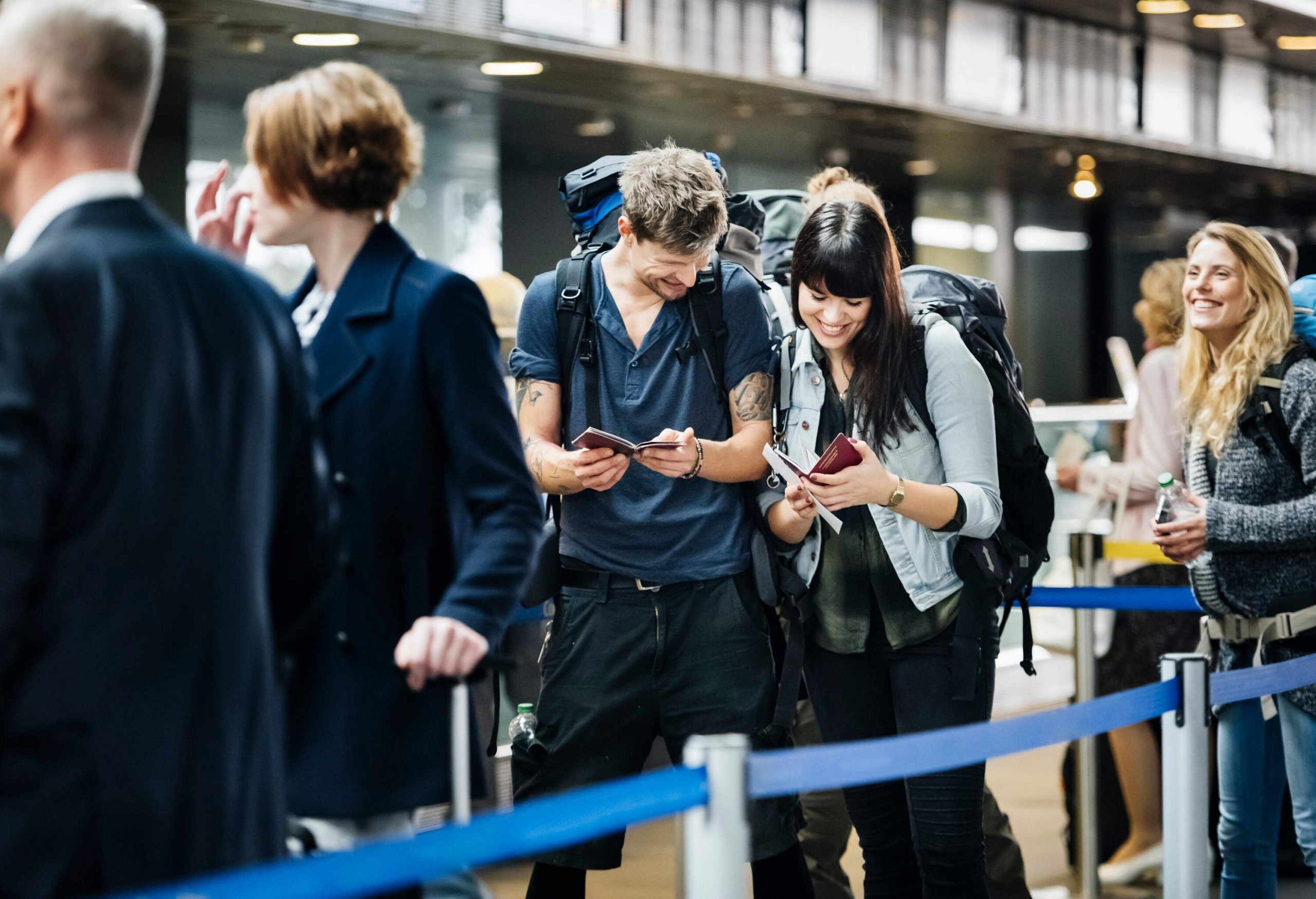
SENTRI vs. Global Entry: What is the difference between the two?
SENTRI and Global Entry are Trusted Traveler Programs that facilitate expedited entry into the U.S. However, there are several differences between the two programs:
- Countries of entry : SENTRI facilitates expedited entry into the United States from Canada and Mexico, while Global Entry facilitates entrance into the U.S. from international destinations.
- Processing time : SENTRI has a longer application processing time (10 to 12 months), while Global Entry has a shorter application processing time (4 to 6 months).
- Travel mode : If you hold a SENTRI card, you can enter the U.S. by land and air only. On the other hand, Global Entry allows entry into the U.S. by land, air, and sea.
- Fees : Global Entry is more affordable (currently at $100) compared to SENTRI (currently at $122.25) for a five-year membership. Information valid on the date of 6th of October 2023.
Yes – the SENTRI pass is individual, and each passenger must have their own pass, regardless of age. Traveling in a SENTRI cardholder’s vehicle without your own pass is not enough. All applicants, including children and infants, must apply for an individual SENTRI card.
To apply for SENTRI:
1. Confirm your eligibility .
2. Create a new Trusted Traveler Programs account
3. Sign in to your account and finalize the application. You’re required to pay a non-refundable fee for each application.

4. Once your application is complete, and you’ve paid the fee, Customs and Border Protection (CBP) will review your application. If successful, you’ll be asked to schedule an appointment at a SENTRI Enrollment Center. If you need help because you are traveling with a disability , reach out to the SENTRI Enrollment Center, where your interview will be held for any special requests, assistance, or modifications.
5. Interview requirements include a valid passport and other identification documents, such as an ID card or driver’s license. You must provide a permanent resident card if you are a legal permanent resident. Additional requirements include your car registration and proof of U.S. automobile insurance by an authorized automobile insurer in the United States.
During your SENTRI interview, demonstrate your genuine need for expedited border crossings due to frequent travel or commuting. Arrive well-prepared with all required documents, and answer questions confidently and truthfully. A professional and courteous demeanor will leave a positive impression and increase your likelihood of securing your SENTRI pass.
SENTRI offers a streamlined solution for frequent border crossers, effectively reducing wait times and simplifying the customs process. Its commitment to efficiency and security makes it an essential tool for enhancing the travel experience along the Canada and Mexico borders.
Before you book your next flight, make sure you read KAYAK’s international travel tips .
The foregoing article was last updated on the 6th of October 2023. It does not contain legal advice and is for informational purposes only. KAYAK does not guarantee, and accepts no legal liability arising from or connected to, the accuracy, reliability, currency or completeness of any of the information contained in this article and/or any of the content linked to within it. Always check the official government website of your departure and arrival destinations prior to travel for up-to-date information. Sources: https://www.cbp.gov/travel/trusted-traveler-programs/sentri https://ttp.dhs.gov/
About the author

Explore more articles

- How we work
- Hotel owners
- Advertise with us
- Airline fees
- Low fare tips
- Badges & Certificates
- Terms & Conditions
California consumers have the right to opt out of the sale * of their personal information. For more information on how we securely process personal information, please see our Privacy Policy .
Do not sell my info ON
* The definition of "sale" under the California Consumer Privacy Act is applicable only to California consumers.

Global Entry vs SENTRI: Comparing the Trusted Traveler Programs

The Global Entry and SENTRI programs can significantly improve your travel experience. Choosing the right one depends on where you travel and how often you travel.
At a high level, Global Entry is broad, enabling you to use the dedicated Global entry kiosks at select US airports when arriving in the US from any country. SENTRI also offers the same benefits as Global Entry (if you also qualify for Global Entry) and also enables a streamlined entrance into the US by land from Mexico and Canada.
This guide will go in-depth into the similarities and differences between the Global Entry and SENTRI Trusted Travelers Programs so you can decide which is best for you and get started with your application.
Overview of Global Entry vs SENTRI
What is sentri.
SENTRI, short for Secure Electronic Network for Travelers Rapid Inspection, is one of five Trusted Travelers Programs (TTP) by the US Customs and Border Protection (CBP) program that allows expedited clearance for pre-approved, low-risk travelers upon arrival in the United States. SENTRI card holders participants may enter the United States by using dedicated primary lanes into the United States at Southern land border ports.
If you've ever waited in line at customs when re-entering the US, you know how long these waits can get. SENTRI saves you the wait or at least shortens it.
Here's where things might get confusing.
US citizens who apply and qualify for SENTRI also receive TSA PreCheck and Global Entry benefits. That means an expedited airport security process and re-entry into the US through Global Entry kiosks.
However, Mexican nationals who have SENTRI must apply separately for Global Entry.
How does SENTRI work?
After completing the online application and passing a rigorous background check and in-person interview at a SENTRI enrollment center , you'll receive a SENTRI card that allows you to use dedicated lanes at land borders and Global Entry kiosks at participating airports. This allows you to bypass long lines and get through customs quickly.
How to Apply for SENTRI
- Create a Trusted Traveler Programs account
- Complete the online application.
- Schedule an interview appointment after receiving conditional approval.
- Pay the $122.25 enrollment fee, which covers five years of membership upon successful completion of the interview.
What is Global Entry?
Global Entry is another Trusted Traverls Program by US CBP that allows pre-approved, low-risk travelers to breeze through customs and immigration checkpoints when arriving in the US by air.
It's open to citizens of the following countries:
- The Netherlands
- South Korea
- Switzerland
- United Kingdom
How does Global Entry Work?
Similarly to SENTRI, once you complete the online application , pass the background check and an interview at a Global Entry enrollment center , you'll receive a Global Entry card that allows you to fly through customers using one of the Global Entry kiosks.
You'll also get the benefit of TSA PreCheck so you can quickly get through airport security using the TSA PreCheck line.
How to Apply for Global Entry
To apply, create a Trusted Traveler Programs account online and pay a non-refundable application fee of $100 (this fee is covered by many credit cards).
You'll need to schedule an interview at a Global Entry enrollment center with a CBP. Once you pass the interview, you'll be approved and can use dedicated CBP processing lanes to breeze through customs.
What about NEXUS?
If you've checked out the Trusted Travelers Program website, you'll notice there's another program similar to Global Entry called NEXUS .
NEXUS also includes Global Entry benefits and is specifically for those who travel frequently between the US and Canada by land or sea.
Learn more about NEXUS.
Should you choose Global Entry or SENTRI?
If you're a US Citizen who generally travels internationally (including to Mexico) frequently, we recommend applying for Global Entry as you'll also be able to use the SENTRI lanes when traveling by land. Just remember to register your car with CBP.
If you're a Mexican national, then you'll need to apply for SENTRI to streamline your entrance into the US, but we also recommend applying for Global Entry if you plan to fly to different US cities.
In either case, you'll need to schedule an interview at a CBP enrollment center and wait times are at an all-time high. We recommend using Appointment Scanner to skip the wait and book an appointment faster.
David Ly Khim
What is a TSA lock and how do I set it?
Translated from German by Abha Vardhan (2019)
The flight to the USA went without any problems and the well-deserved vacation is already waiting behind the airport doors. But then, the shock! The padlock is gone and the rest of the suitcase looks pretty battered too.
What happened? The American officials wanted to control the locked suitcase and so the suitcase was broken and opened. Annoying, but for the staff, it was legitimate. To avoid this happening again, we, therefore, recommend a TSA lock.
TSA Lock - What Does It Mean?
After the unfortunate incident of 9/11, the policies of air travel have changed drastically. There are much improved and tighter securities in every airport that go along with stringent baggage regulations; for instance, the amount of liquid and sharp objects you can take on board.
Transport Security Administrations or TSA was founded for the security of the country for possible attacks. The functions of the TSA are varied and one of them is to examine the baggage of air travelers. They regularly check millions of suitcases for toxic materials, explosives at over thousands of locations in over 450 airports in the United States.
It does not matter if the person wants to enter the USA directly or if they just want to make a stopover until the next flight. If the officials notice something or if your suitcase is selected as a sample, it will be opened and searched. In contrast to other countries, such as in Germany or Canada, you will not be informed about the investigation, only an information leaflet will be settled afterward.
If the TSA officials were not able to check your belongings because you have locked your luggage, they are entitled to break the suitcase and you will not receive any compensation for the lock and/or any other damages that they have made to your luggage.
However, this is only the case if you do not have a TSA lock on your luggage. These special TSA locks have a master key, which allows others to search your suitcase without having the number code or the "right" key.
This master key is not officially available on the market but is only used by some designated TSA officials. Thus, you do not have to worry that any person can just buy the master keys in the store and get their hands on your luggage.
More importantly, the security officers in other countries do not have a TSA key, which is why most of the luggage is still searched in the presence of the owner.
How Do I Know If A Lock Is Suitable For TSA?
The TSA-compatible padlocks are either already integrated into the case or purchased separately and attached. The locks are locked either by numeric code or with a key. There are also TSA-approved luggage belts.
TSA has worked with numerous companies to create specialized locks that let passengers secure their goods from theft and also allow the TSA to unlock and check their contents with the help of a universal master key. These locks are referred to as the TSA locks or TSA approved locks.
TSA locks are produced by two different manufacturers; Travel Sentry and Safe Skies. The company Travel Sentry is more famous of the two and you can quickly recognize their logos on their products.
The logo of Travel Sentry is a red diamond shape on a white background and the logo of the company Safe Skies is a red-white torch. Incidentally, Travel Sentry is also called TSA, meaning Travel Sentry Approved, which is similar to the competent authority Transport Security Administrations.
The locks are always numbered (TSA001, TSA002, TSA003, TSA004, TSA005, TSA006, and TSA007), which serve as an indication to the authorities to which TSA master key they must use.
How to Set the Number Code?
So, you’ve gotten a TSA-compatible combination lock and now you want to set it?
Here is an informative general guide for your assistance:
- The starting combination should be set to 0-0-0. This is the factory setting.
- Now, press the adjusting knob with a pointed object, e.g. a pencil, until it makes an audible click sound.
- Turn the wheel to enter your number code. If necessary, write it down on a piece of paper so you will not forget it.
- Move the opening slider until the adjustment knob returns to the start position.
- Your number combination is now set. You can now hook the zipper zips in the lock to lock your suitcase.
Please note that this is a general setting and that the procedure may vary depending on the type of lock and its manufacturer.
From our own experience, we would like to advise you to enter a code immediately upon receiving, as we are aware of a few cases in which lock combinations have shifted due to heavy jerking, for example, by having the suitcase roll on cobblestones.
Instructions for Setting the TSA Combination Lock on A Travelite CrossLITE
- Make sure that the combination shows 0 three times when the lock is first set. This is the factory setting.
- Press the adjustment knob with a sharp object, such as a pen, until you hear a clear click.
Important: Not every new TSA lock on Travelite have an adjustment knob. In this case, you just have to move the slide button (the direction is indicated by an arrow on the button) and then hold that position.
- Enter your new number combination.
- Now, move the slider button so that the adjustment knob springs back. If you have a lock without a knob, then let the slide button slide back to its original position.
- That's it. You have successfully set the TSA lock. If you want to set a new combination, just repeat steps 2-4.
Instructions for Setting the Integrated TSA Combination Lock on A TITAN X2
- Before you begin, make sure that the number combination is set at 0-0-0, which is the factory setting for a new case. If you or someone else has already set the code, you must set this number combination. Press the adjustment knob.
- There is a small knob on the side of the TSA lock. Press this with a sharp object such as a small pen, until you hear a "click".
- Now, set your desired number combination. Important: If necessary, make a note of it before or immediately afterward! We can assure you that one of the most common reasons for customer problems in our shop is a forgotten combination. Press the opening slide.
- Once the desired code has been set, press the opening slider until the adjustment knob returns.
- You did it! The Titan case will now only be able to be opened by the correct combination.
Instructions for Setting the Lock for A-Frame Case Like the TITAN Prior
- Set the number combination to 0-0-0 the first time. Now, open the closure on the side. On the back, you will find a small slider.
- Press the slider left or down and hold it for a while.
- Enter your code using the number of wheels.
- Release the slider to return it to its original position.
What to Do If You Have Forgotten Your Combination of Numbers?
- Try all numbers from 0-0-0 to 9-9-9. There are 1,000 possible combinations here but now that you are skeptical and think it would take hours; we can reassure you. We have done this a few times ourselves and have needed between 20-60 minutes.
- Try the twisted code (example: the code is 0-0-0, the twisted code would be 5-5-5).
- Contact the seller from whom you have the TSA lock.
- Communicate directly to the manufacturer of the item of luggage. (Always try to fix this via the seller first).
- Try to turn number wheels for padlocks until you hear a clear click.
- Check if you can see a notch on the wheels. At this point (or the right or left of it) it is the right combination.
- Pierce the zipper with a ballpoint pen and open the case. Important: You may not be able to close the case afterward, therefore, you should use this as a last resort.
- Try to crack the lock trying with a lockpick or jiggler.
Use TCA Locks to Avoid Hassles and Inconvenience
You must purchase a TSA lock when traveling to the US if your suitcase does not already have one. With a TSA lock, you will not face any possible delays and damages to your suitcase due to a possible examination.
Most suitcase manufacturers have installed a TSA lock on their products rather than a regular lock. In the past few years, suitcases with integrated TSA locks have become very popular among travelers. You can get these suitcases from any reputed brand such as Rimowa, Delsey, Samsonite, Victorinox and many more.
As an alternative, you can consider not locking your suitcases, but we would advise against that as it may increase the chances of theft. We advise travelers to use TSA locks but they must not forget the unlock combinations! Also, make sure to set the lock code a few days before departure and see if it works.
Source: koffermarkt.com
Written By : Susanne


An official website of the United States government
Here’s how you know

Official websites use .gov A .gov website belongs to an official government organization in the United States.
Secure .gov websites use HTTPS A lock ( Lock A locked padlock ) or https:// means you’ve safely connected to the .gov website. Share sensitive information only on official, secure websites.

- Trusted Traveler Programs
- How To Apply
How to Apply for SENTRI
Before you apply, make sure you are eligible for SENTRI.
It’s easy. Just follow these steps:
- Create a Trusted Traveler Program (TTP) System account. Regardless of your age, you must have your own TTP account.
- Log in to your TTP account and complete the application. A non-refundable fee is required with each completed application.
- After accepting your completed application and fee, CBP will review your application. If your application is conditionally approved, then your TTP account will instruct you to schedule an interview at a SENTRI Enrollment Center. Each applicant must schedule a separate interview.
- You will need to bring your valid passport(s) and one other form of identification, such as a driver’s license or ID card to the interview. If you are a lawful permanent resident, you must present your permanent resident card. Also, required are vehicle registration and evidence of United States automobile insurance by a company authorized to write automobile insurance in the United States.
Reasonable Modifications for Applicants with a Disability After you have submitted your application and scheduled an interview at a SENTRI Enrollment Center , if you require assistance for the interview because of a disability, contact the SENTRI Enrollment Center where your interview is scheduled to request a reasonable modification or auxiliary aid or service to complete the interview. Requests for a modification, aid, or service should be made as soon as possible and prior to the date of an interview to allow sufficient time for making the appropriate arrangements at the interview location.
All you need to know about Sentri, the only trusted traveler program available widely to foreign travelers

Editor's Note
Thus far, I've detailed three of the five trusted traveler programs designed to assist travelers in passing through security lines at U.S. airports and crossing domestic borders.
This week, I take a look at Sentri, the Mexican counterpart to Nexus , which, unlike other TTPs, is accessible to foreign travelers outside of the U.S.
For more TPG news delivered each morning to your inbox, sign up for our daily newsletter .
Here are this week's top five questions:
1. What is Sentri?
Sentri not only allows drivers (or walkers) expedited passage into the U.S. from Canada and Mexico via Sentri-specific lanes but also grants access to TSA PreCheck lanes at airports within the U.S. and overseas territories.
The other big TTPs , Global Entry , TSA PreCheck and Nexus, are primarily restricted to U.S. citizens and lawful permanent residents, although Canadian citizens/permanent residents can use Nexus. Sentri, on the other hand, is open to all those groups plus all foreign nationals.
"SENTRI was established to expedite movement along the Southwest Land Border of eligible, pre-screened, low-risk, pre-approved travelers through designated vehicle traffic lanes," says the U.S. Department of Homeland Security. "There is no citizenship or residency requirement to apply for SENTRI."
Despite this, Sentri is most beneficial for people who live in or frequently cross border states, specifically those along the northern border with Canada or southern border with Mexico.
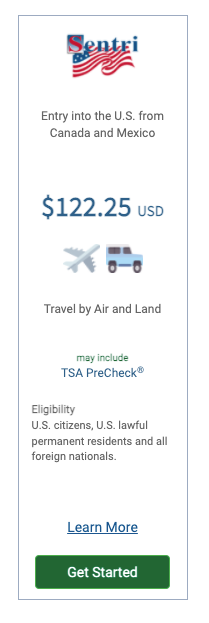
2. How do I apply for Sentri?
Interested people can apply for Sentri online, in addition to submitting a $122.50 fee.
"Applicants must voluntarily undergo a thorough biographical background check against criminal, law enforcement, customs, immigration, and terrorist indices; a 10-fingerprint law enforcement check; and a personal interview with a Customs and Border Protection (CBP) Officer," per the DHS.
If your application is approved, you'll be asked to schedule and attend an in-person appointment at one of 13 locations across Arizona, California and Texas.
Currently, the soonest available appointments are in Laredo and Mission, Texas, so note that you may have to wait for an appointment depending on your desired enrollment center location.
Once approved, a Sentri membership lasts for five years.
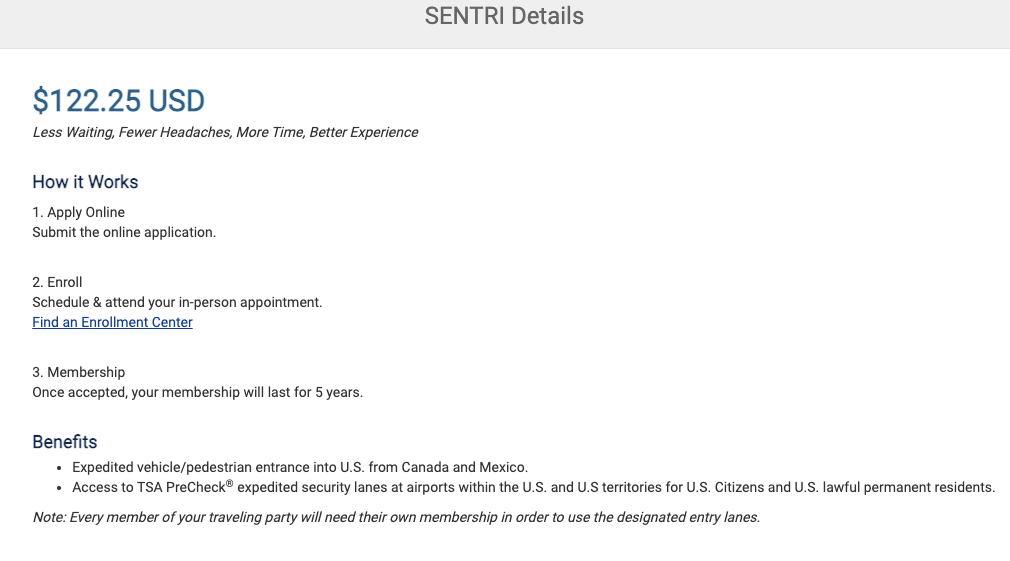
3. Are there any other application steps?
In order to access a Sentri lane, all vehicles must be registered. Those registered as part of your initial application to the program are free; however, any additional vehicle registrations cost $42 per car.
You can register up to four vehicles for use in the Sentri lanes and up to eight members per vehicle.
"Approved SENTRI members are able to use the Global Entry kiosks when re-entering the United States by air and TSA Pre-check, as long as they meet the citizenship requirements for Global Entry and their fingerprints and passports are on file," says the DHS.
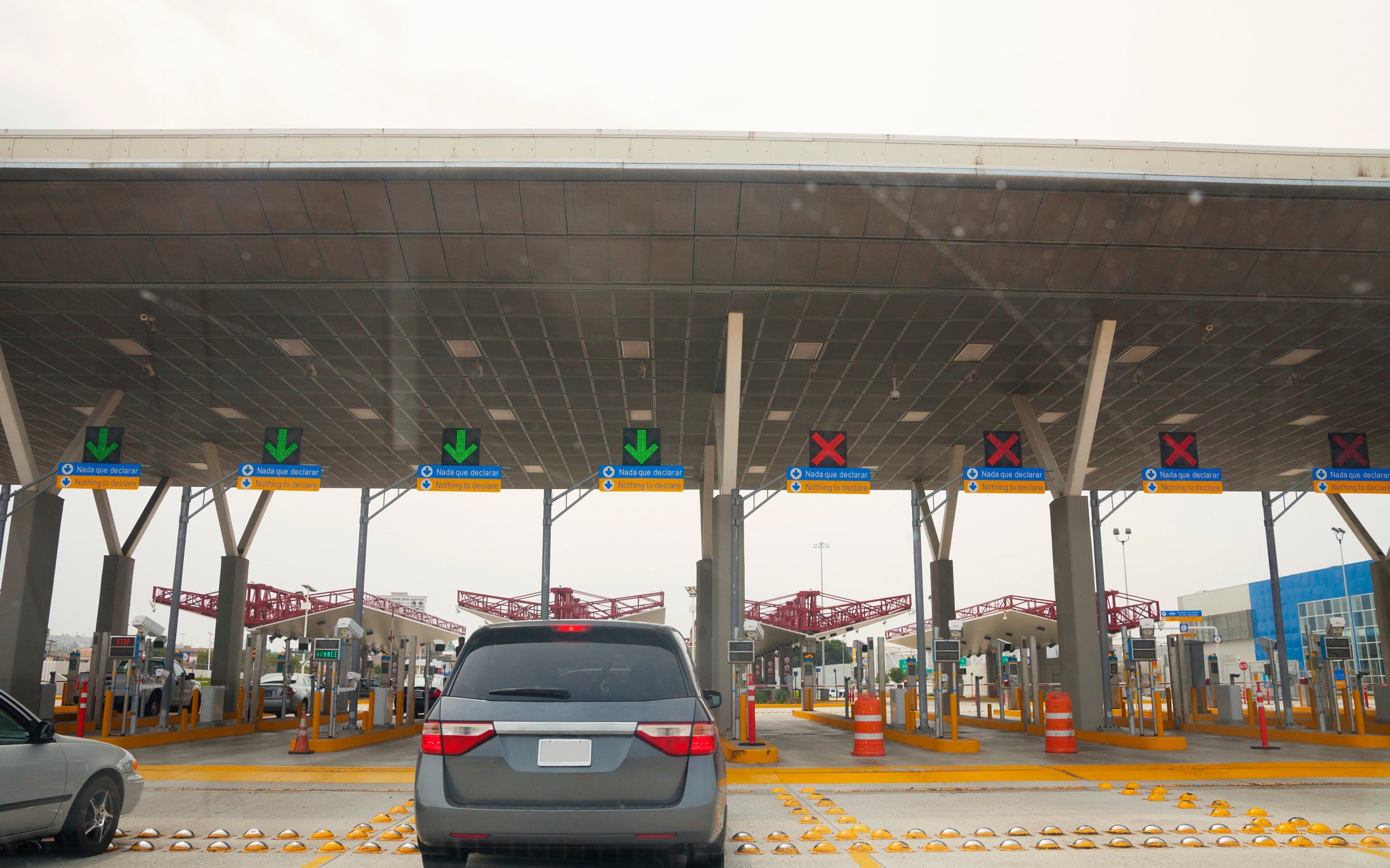
4. Does Nexus allow me to use the Sentri lanes (and vice versa) when traveling back to the US from Mexico?
Per the DHS, Sentri members are not "entitled to any benefits under the NEXUS program through their SENTRI membership," but Nexus members have the option to register their vehicle for use in Sentri lanes when entering the U.S. from Mexico.
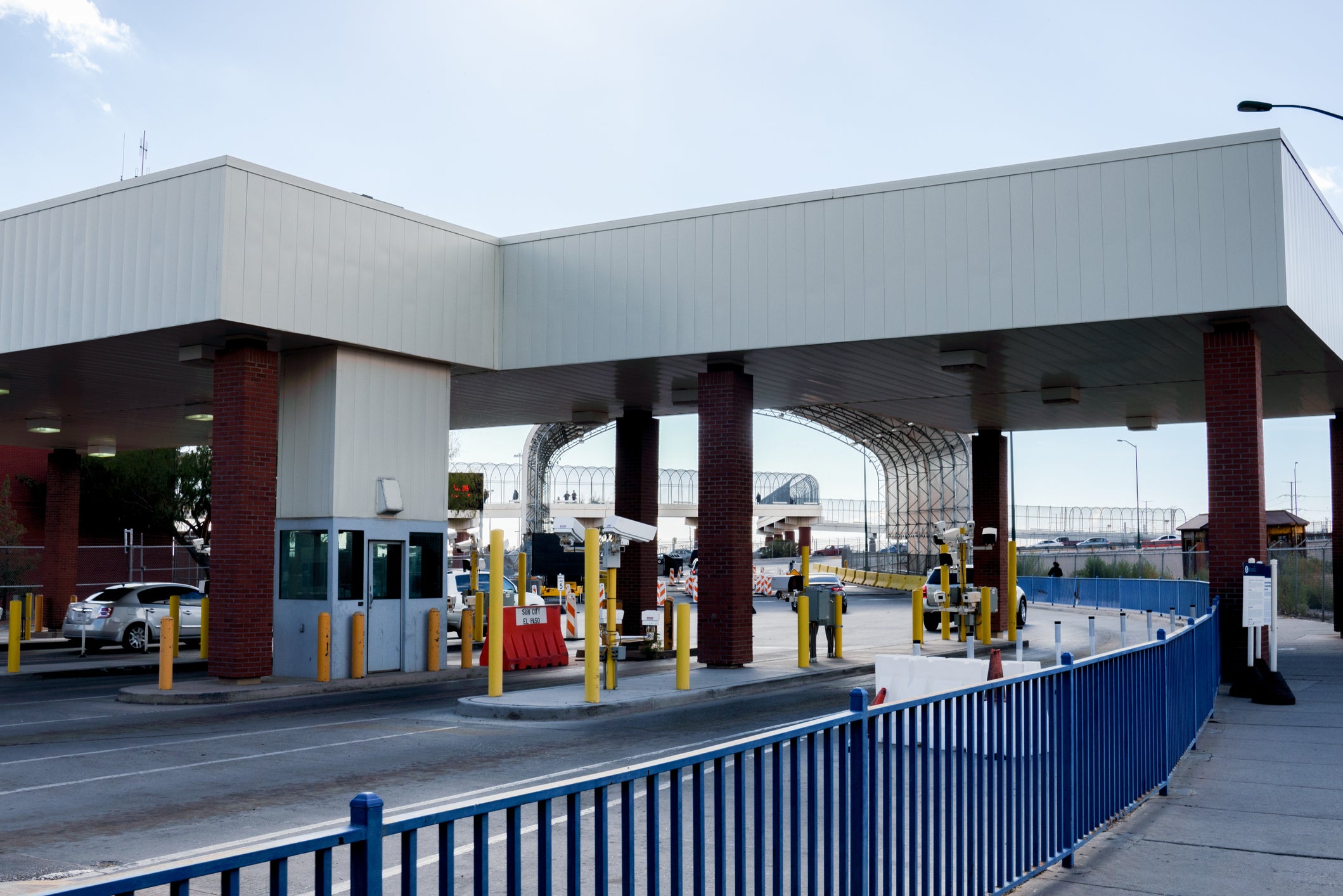
5. Is there a way to expedite a Sentri application when I already hold a Nexus card?
Unfortunately, no. Your status in one program does not affect the speed at which your application is processed for another.
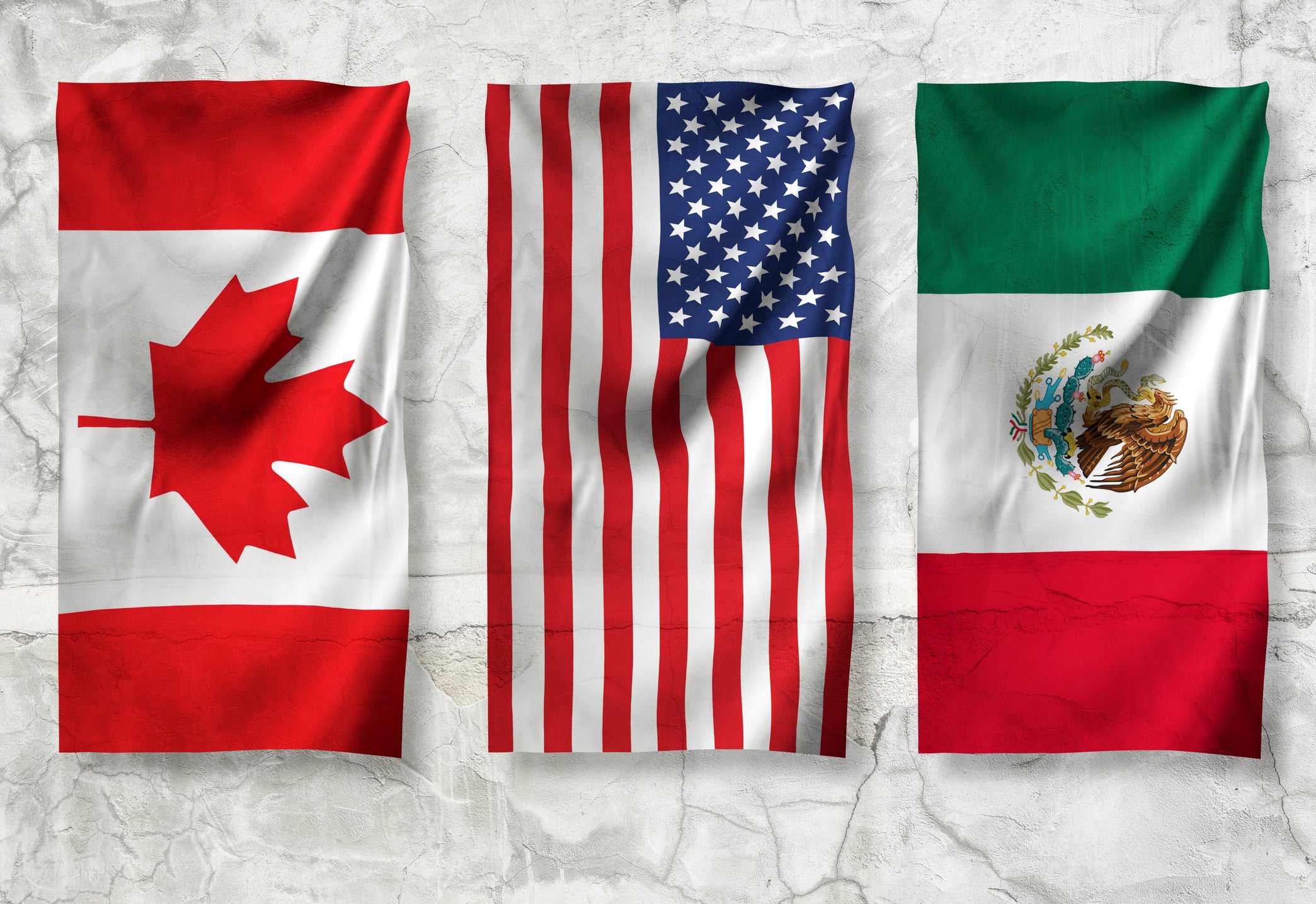
Have a question for next week? Email me at [email protected] or [email protected] .
TSA Luggage Locks – Frequently Asked Questions
Last Updated on June 24, 2020
These are the questions most often asked about tsa luggage locks.
The TSA requires access to your luggage whether you are present not. To allow you to lock your luggage they helped develop TSA approved locks.
A TSA approved lock is a lock design that is certified by a Florida based company called Travel Sentry.
All TSA luggage locks can be unlocked using a master key. The TSA officers have keys (a bunch of around 7 or 8 keys) that they can use to open millions of suitcases. Without the master key, you will need the combination code or the key that came if your lock. Your key is not a master key, it will only open your lock.
TSA recognized locks can be identified by the red diamond logo. Locks are TSA approved if they are made to the standards set by Travel Sentry. Travel Sentry don’t make the locks. They license the standard. Over 500 luggage brands or travel accessory brands around the world license the standard so they can call their locks “TSA approved” and use the red diamond logo. Their product designs must be certified by Travel Sentry.
The TSA security officers have a set of master keys that they use to open locks. On your TSA lock it will usually say something like TSA002, or TSA007. This tells the officer which key they need to use to open the lock.
Some TSA locks have an indicator that shows if your luggage has been opened for inspection. However, this should not be necessary. The TSA leaves a note if they have searched your bag.
You can buy airport approved luggage locks in many places. The cheapest deals are often found on Amazon. But you will also be able to buy a padlock at the airport. You can also buy luggage that has integrated TSA locks.
Not really, TSA locks are not very secure . The shackle on the padlocks has a very thin diameter that could easily be cut. The codes on the combination locks can be picked very quickly. And, a determined thief could get their hands on a set of master keys from eBay or even print their own set using a 3D printer.
Yes, they are worth it. But that’s because they are cheap not because they are secure. You can buy an approved lock for about $5. It wouldn’t stop a determined thief but it might be a deterrent to a casual thief. They will probably move on and steal from a bag that is not locked.
Don’t buy the type with combination locks if you are forgetful. Don’t buy the type with keys if you are the type of person to lose the keys. And if you are forgetful and lose keys then I suggest securing your zips with a plastic zip tie. This would still deter thieves while allowing TSA staff to cut your case open using scissors. The TSA opens around 10% of checked bags for further screening.
If you have a 3 digit combination lock the quickest way is to simply try all the combinations . It will take you less time than you think. If you have a 4 digit lock then it’s better to try to listen for the click.
One of the flaws with cheap padlocks is that they can sometimes jam. If this happens often it’s because the code has changed by accident and it’s become locked. I wrote a post about fixing jammed locks .
Overall TSA officers and screening staff are fine dependable folks, but there are always a few bad eggs. It’s also possible that airline baggage handlers could steal from checked luggage.
The Verdict
TSA friendly locks do solve the problem of granting access to security agents.
Unfortunately, locking your luggage doesn’t stop thieves from stealing your valuables.
Travelers “lose” belongings from checked bags all too often and it can still happen if your suitcase is locked.
So one of my top travel tips is to always pack valuables in carry-on luggage.
And make sure you pack a packable daypack just in case boarding agents ask you to gate check your carry-on.
If you need to hand over your carry-on open it up and remove any valuables and keep them in your packable daypack.
Basically, don’t lose sight of your valuables and don’t depend on locks whether they are TSA approved luggage locks or not!
Did This Page Help You?
How can we fix the page.
Please let us know how to improve the page we'll try to fix it.
There Were Errors On The Page It Was Missing The Information I Needed
Tell Us More...
Your Name (required)
Your Email (required)
Great! We Aim To Please!
Maybe you can help us.
Social shares allow us to continue to publish more articles so if you can help out by sharing it would be much appreciated!
- Twitter / X
- Readers' Choice
- Food & Drink
- Arts & Culture
- Travel Guides
USA TODAY 10Best
How do you unlock a TSA lock if you forgot the combination?

December 12, 2022 // By Lois Alter Mark
By Lois Alter Mark Travel Expert December 12, 2022

Using a TSA lock on your suitcase is a great way to keep your belongings safe while making it easy for TSA officers to do their job. But, because the lock requires a combination, it gives you something else to remember in addition to all those passwords floating around in your head. And that means there’s a chance you’re eventually going to forget it.
Don’t worry. We’ll show you how to open a TSA lock when you forget the combination, so you can get on with your travels even when the code escapes you.
What is a TSA lock, anyway?
A TSA lock is one to which only TSA officials have a key. You set the combination yourself and, if a TSA agent has to look inside your bag because they see something suspicious on the scanner, it can be easily opened with their master key. If you use a lock that’s not TSA-approved, the agent’s only way to get in is to cut the lock or the bag itself, possibly damaging it.
Advertisement Advertisement
Many suitcases already come with built-in TSA locks but, if they don’t, you can buy one separately.
How to open your TSA lock and reset the combination
If you forget your TSA lock combination, there are a few methods you’ll want to try to open it. And, yes, you do have to open it before you can reset the combination. Because there’s no standard solution for this, you’ll have to experiment to see which one works for you.
Since different locks require different processes, the most effective first step may be to call the luggage or lock company itself (or check their website) for brand-specific instructions.
Travel Sentry, whose red diamond logo certifies that a lock is TSA-approved, recommends trying every possible combination from 000-999, starting with 000, 001, 002 … and working your work to 999. Although, admittedly, this seems time-consuming, they assure it should take 30 minutes or less, especially if the first number is a 0, 1 or 2 (something to keep in mind when you’re coming up with a new combination).
If the idea of that is overwhelming and your luggage features a built-in TSA lock, you can try this:
- Use a safety pin to locate the metal or plastic cylinder on the right side of the first dial. The flashlight and camera on your phone can help you zoom in on it.
- Turn the dial and, with the safety pin, look for an indentation or gap in the cylinder. Leave the dial at that number.
- Repeat the process for the other two dials.
- If the lock doesn’t open, turn all three dials down one number.
- If the lock still doesn’t open, keep turning all three dials down one number at a time until it does.
Here’s another method that has worked for travelers with TSA padlocks:
- Put pressure on the locking mechanism by pushing the button or pulling on the lock.
- Turn the first dial slowly until you hear an audible click, which signals it’s the correct number.
- Repeat the process for the next two dials.
- When all three numbers are correct, the lock will open.
If you forget your combination while the lock is still open, all you have to do is reset it with a new combination. Again, you may be best off checking the brand’s website for individual instructions, but you can reset most freestanding locks this way:
- Set each dial to 0 so it reads 000.
- Rotate the shackle 90 degrees from the lock position.
- Press the shackle and keep it down while you set your three-digit combination.
- Release the shackle and turn it back to the lock position.
To reset most built-in locks, simply slide the lock button in the direction of the arrow, set your new code and release the button.
Is it really worth using a TSA lock?
Using a TSA lock is totally a matter of personal preference. Many travelers feel safer knowing that their luggage is secure while others don’t want to have to worry about remembering one more thing. The fact is, of the 1.4 million checked bags the TSA screens daily, only about 5% of checked bags are actually opened by agents for further inspection.
Our advice? Use a TSA lock and store your combination safely in your phone for all-around peace of mind.

About Lois Alter Mark
Lois Alter Mark is an award-winning travel and lifestyle writer who also writes regularly for Forbes and Reader's Digest. She writes about everything from luxury cruises and spas to quirky restaurants and street art. A former New Yorker, Lois now lives in San Diego where she's turned into a weather wimp and is still searching for a good slice of pizza.
Read more about Lois Alter Mark here.
Connect with Lois via: Website | Facebook | Instagram | Twitter | Pinterest | LinkedIn
- Credit cards
- View all credit cards
- Banking guide
- Loans guide
- Insurance guide
- Personal finance
- View all personal finance
- Small business
- Small business guide
- View all taxes
You’re our first priority. Every time.
We believe everyone should be able to make financial decisions with confidence. And while our site doesn’t feature every company or financial product available on the market, we’re proud that the guidance we offer, the information we provide and the tools we create are objective, independent, straightforward — and free.
So how do we make money? Our partners compensate us. This may influence which products we review and write about (and where those products appear on the site), but it in no way affects our recommendations or advice, which are grounded in thousands of hours of research. Our partners cannot pay us to guarantee favorable reviews of their products or services. Here is a list of our partners .
What is the SENTRI Pass and How Does it Work?

Many or all of the products featured here are from our partners who compensate us. This influences which products we write about and where and how the product appears on a page. However, this does not influence our evaluations. Our opinions are our own. Here is a list of our partners and here's how we make money .
Travelers can encounter massive lines to cross the borders by car. Travelers who are on a tight schedule may wonder: Are there faster ways to reenter the U.S. by land from our North American neighbors? The short answer is yes — NEXUS for travel in and out of Canada and SENTRI for travel back into the U.S. from Canada or Mexico.
Here, we take a look at the SENTRI Pass — what it is, how it works, how to get it and who should apply for it.
What is the SENTRI Pass?
SENTRI is one of five Trusted Traveler Programs from U.S. Customs and Border Protection that allow expedited entry into the U.S. when crossing international borders. Where a program like TSA PreCheck seeks to expedite screenings for air travel, SENTRI, along with NEXUS and FAST, have similar intentions for U.S. land border crossings.
SENTRI is the only program that allows preapproved, low-risk travelers to reenter the U.S. from Mexico on foot or by vehicle using special SENTRI lanes at the land border ports. In addition, it also grants expedited access into the U.S. from Canada through dedicated NEXUS lanes. That said, SENTRI doesn't expedite entry into Mexico or Canada from the U.S.
» Learn more: Traveling across borders during COVID-19

How does the SENTRI Pass work?
After completing an application process and screening, SENTRI users are issued a Radio Frequency Identification card identifying valid membership. When crossing the U.S.-Mexico border, the SENTRI card automatically populates information for U.S. Customs and Border Protection officers who can choose to let the vehicle and its passengers continue into the U.S. without further inspection.
It’s a similar process when reentering the U.S. through a land border with Canada.
How much is a SENTRI Pass?
At $122.25, SENTRI membership is the most expensive of the Trusted Traveler Programs. But more than expedited land crossings, U.S. citizens and U.S. lawful permanent residents approved for SENTRI can automatically get TSA PreCheck and use Global Entry kiosks with their passport or resident card. These benefits come at no extra cost.
It’s important to note that the fee, which is paid with your application, is nonrefundable. Even if you're not approved after applying and paying, it won't be refunded.
Once accepted for SENTRI, membership is valid for five years. Note that each passenger traveling through a SENTRI lane must be approved individually for membership. It’s not enough to travel in a member’s car without your own SENTRI membership.
How do I get a SENTRI Pass?
You can apply for SENTRI in five steps.
Create a TTP account . Note that each applicant must have a separate TTP account, regardless of age, even if all applicants plan to drive in the same registered vehicle.
Log in to your TTP account and complete the online application.
Pay the $122.25 membership fee, which is good for five years.
Upon conditional approval, schedule an interview at a SENTRI Enrollment Center .
Attend your interview and bring your passport, one other official form of identification, vehicle registration and a copy of your U.S. auto insurance policy. Bring your permanent resident card if you are a lawful permanent resident. If you are at least 14 years old, you must also have your fingerprints taken.
» Learn more: TSA PreCheck or Global Entry: Which is right for you?
Why should I get the SENTRI Pass?
The SENTRI Pass makes a lot of sense for particular travelers and circumstances.
You live near a U.S.-Mexico border and cross frequently
Hours-long lines are common at international land borders between the U.S. and Mexico. Getting SENTRI for yourself and your travel companions could translate to hours of time saved. Multiply these hours by the number of times you cross, and the value in a SENTRI membership increases greatly.
Given that SENTRI is primarily intended for those who cross the border frequently, enrollment centers are found exclusively in cities close to the U.S.-Mexico border. There are 11 centers currently:
Arizona: Phoenix, Tucson, Douglas, Nogales and San Luis.
Texas: El Paso, Hidalgo, Brownsville and Laredo.
California: Calexico and San Diego.
An in-person visit at an enrollment center is required for membership approval.
You live near a U.S.-Mexico border and travel internationally frequently
Since U.S. citizens and lawful permanent residents approved for SENTRI get the added benefits of Global Entry, TSA PreCheck, and NEXUS lanes for entry into the U.S. from Canada, those who travel internationally frequently could benefit from this program.
You plan to do some road-tripping in Mexico
If you plan on doing a lot of road trips between Mexico and the U.S., it may be worth your while to get a SENTRI card. However, consider the costs or hassle involved in visiting an enrollment center in Texas, Arizona or California before applying.
Who should skip the SENTRI Pass
SENTRI Pass membership isn't ideal for people who plan to travel by car extensively in Canada. Other travelers who would be wise to forego membership include:
Those who live near Canada or want to visit Canada by car. It’s true that SENTRI members can access dedicated lanes to reenter the U.S. from Canada by land, but that’s simply an added benefit of membership. The main program targeted for those crossing U.S.-Canada land borders is NEXUS, which allows preapproved travelers to travel between the countries in expedited lanes. Since NEXUS is a joint program between the U.S. and Canadian immigration authorities, these lanes are found on both sides of the border.
Those who don't live near a SENTRI enrollment center. Though it may come with Global Entry and TSA PreCheck, SENTRI is geared toward land crossings at the U.S.-Mexico border. A better option for those who travel internationally by plane and don’t live near a SENTRI Enrollment Center may be applying for Global Entry. This program allows you to use Global Entry kiosks at U.S. Customs when returning from international travel from over 75 international airports. Global Entry also comes with TSA PreCheck.
» Learn more: Credit cards with TSA PreCheck or Global Entry credits
Is the SENTRI Pass worth it?
If you live within a few hours of a SENTRI Enrollment Center and cross the U.S.-Mexico border even a few times a year, the SENTRI Pass is well worth getting. Though the application fee of $122.25 per member is higher than other Trusted Traveler Programs, saving hours at the border every single time can feel priceless. Plus, the bonus benefits of Global Entry, TSA PreCheck and the use of NEXUS lanes make it even more worthwhile for frequent travelers.
If you want to obtain a SENTRI Pass
The SENTRI Pass can make sense for U.S.-based travelers who frequently cross the country's land borders by car, especially for those who live near the southern border and visit Mexico often. Canada-bound U.S. travelers will likely get better value out of the NEXUS card. For a little over $100, travelers will automatically get TSA PreCheck and Global Entry benefits.
How to maximize your rewards
You want a travel credit card that prioritizes what’s important to you. Here are our picks for the best travel credit cards of 2024 , including those best for:
Flexibility, point transfers and a large bonus: Chase Sapphire Preferred® Card
No annual fee: Bank of America® Travel Rewards credit card
Flat-rate travel rewards: Capital One Venture Rewards Credit Card
Bonus travel rewards and high-end perks: Chase Sapphire Reserve®
Luxury perks: The Platinum Card® from American Express
Business travelers: Ink Business Preferred® Credit Card

on Chase's website
1x-5x 5x on travel purchased through Chase Travel℠, 3x on dining, select streaming services and online groceries, 2x on all other travel purchases, 1x on all other purchases.
60,000 Earn 60,000 bonus points after you spend $4,000 on purchases in the first 3 months from account opening. That's $750 when you redeem through Chase Travel℠.

1.5%-6.5% Enjoy 6.5% cash back on travel purchased through Chase Travel; 4.5% cash back on drugstore purchases and dining at restaurants, including takeout and eligible delivery service, and 3% on all other purchases (on up to $20,000 spent in the first year). After your first year or $20,000 spent, enjoy 5% cash back on travel purchased through Chase Travel, 3% cash back on drugstore purchases and dining at restaurants, including takeout and eligible delivery service, and unlimited 1.5% cash back on all other purchases.
$300 Earn an additional 1.5% cash back on everything you buy (on up to $20,000 spent in the first year) - worth up to $300 cash back!

on Capital One's website
2x-5x Earn unlimited 2X miles on every purchase, every day. Earn 5X miles on hotels and rental cars booked through Capital One Travel, where you'll get Capital One's best prices on thousands of trip options.
75,000 Enjoy a one-time bonus of 75,000 miles once you spend $4,000 on purchases within 3 months from account opening, equal to $750 in travel.

Your Privacy
We use cookies on this site to enhance your user experience.
Cookies help us deliver the best experience on our website. By using our website, you agree to the use of cookies. More info .
Travel Sentry makes travel safer and simpler
Safe Inspection No Damage
The Future of Luggage Track and Trace
Smart ID Tag Free Lifetime Protection
The Global Lost & Found Solution
TS Accessories
Travel in comfort, style and security
Looking for help?
Whether you need TSA lock setting instructions or FAQs, you’ll be sure to find the answer in our help section.
The Global standard for Travel Security
- Cambridge Dictionary +Plus
Meaning of sentry in English
Your browser doesn't support HTML5 audio
- defence mechanism
- energy conservation
- preservationist
- safeguarding
- safekeeping
- security guard
- white knight
- witness protection
You can also find related words, phrases, and synonyms in the topics:
sentry | American Dictionary
Examples of sentry, translations of sentry.
Get a quick, free translation!

Word of the Day
sung by a group of people without any musical instruments

Shoots, blooms and blossom: talking about plants

Learn more with +Plus
- Recent and Recommended {{#preferredDictionaries}} {{name}} {{/preferredDictionaries}}
- Definitions Clear explanations of natural written and spoken English English Learner’s Dictionary Essential British English Essential American English
- Grammar and thesaurus Usage explanations of natural written and spoken English Grammar Thesaurus
- Pronunciation British and American pronunciations with audio English Pronunciation
- English–Chinese (Simplified) Chinese (Simplified)–English
- English–Chinese (Traditional) Chinese (Traditional)–English
- English–Dutch Dutch–English
- English–French French–English
- English–German German–English
- English–Indonesian Indonesian–English
- English–Italian Italian–English
- English–Japanese Japanese–English
- English–Norwegian Norwegian–English
- English–Polish Polish–English
- English–Portuguese Portuguese–English
- English–Spanish Spanish–English
- English–Swedish Swedish–English
- Dictionary +Plus Word Lists
- English Noun
- American Noun
- Translations
- All translations
Add sentry to one of your lists below, or create a new one.
{{message}}
Something went wrong.
There was a problem sending your report.

IMAGES
VIDEO
COMMENTS
Travel Sentry is bringing its knowledge and expertise to travel accessories — providing the same peace of mind our brand is known for and adding comfort and functionality. ... The airlines are responsible for damage that exceeds the definition of "normal wear and tear". File a claim with your airline without delay.
Travel Sentry is a company that develops and licenses standards used in travel security, including a standard for luggage locks that can be opened by aviation security agencies such as the Transportation Security Administration (TSA). History. Travel Sentry was founded in 2003.
Now you might be wondering, What does Travel Sentry mean? No worries; Travel Sentry is an organization that sets and manages the standards for luggage security. They're specifically known for setting the standards for TSA-approved locks. It ultimately plays a big role in creating a modern-equipped system to balance the security of travelers ...
What is a Travel Sentry® Approved TSA LOCK ? How does Travel Sentry® Approved TSA LOCK works? Learn in this video all the information you need to understand ...
Travel Sentry is bringing its knowledge and expertise to travel accessories — providing the same peace of mind our brand is known for and adding comfort and functionality. High standards, quality materials and finishes have been sourced and ergonomic design and sensory properties have been the focus of this collection.
Travel Sentry is the name of a company that developed a standard for luggage locks. This standard allows security agencies, such as TSA, to open the lock using a master key, without damaging the lock. ... Not all countries use the Travel Sentry system, meaning that they don't have access to master keys to unlock your TSA-approved lock ...
The Secure Electronic Network for Travelers Rapid Inspection (SENTRI) is a U.S. Customs and Border Protection (CBP) program that allows expedited clearance for pre-approved, low-risk travelers upon arrival in the United States. Participants may enter the United States by using dedicated primary lanes into the United States at Southern land border ports.Travelers must be pre-approved for the ...
The meaning of SENTRY is guard, watch; especially : a soldier standing guard at a point of passage (such as a gate). How to use sentry in a sentence.
The Travel Sentry lock system reduces the time and resources required by security agencies to screen check-in luggage, thus reducing delays and cost for airlines and airports. ... These suitcases will resist the conveyer belt's mechanisms, meaning your case will likely last longer and will be a good investment. Bright and Bold Colours.
Travel Sentry is bringing its knowledge and expertise to travel accessories — providing the same peace of mind our brand is known for and adding comfort and functionality. High standards, quality materials and finishes have been sourced and ergonomic design and sensory properties have been the focus of this collection.
Travel Sentry helps solve baggage handling issues for airlines, airports, security agencies and passengers. | The Travel Sentry organization was created in 2003 in cooperation with leading luggage ...
sentry, n.¹ meanings, etymology, pronunciation and more in the Oxford English Dictionary. ... What does the noun sentry mean? ... society travel travel by water vessel, ship, or boat equipment of vessel navigational aids [nouns] device to warn of shoaling water.
Processing time: SENTRI has a longer application processing time (10 to 12 months), while Global Entry has a shorter application processing time (4 to 6 months). Travel mode: If you hold a SENTRI card, you can enter the U.S. by land and air only. On the other hand, Global Entry allows entry into the U.S. by land, air, and sea.
At a high level, Global Entry is broad, enabling you to use the dedicated Global entry kiosks at select US airports when arriving in the US from any country. SENTRI also offers the same benefits as Global Entry (if you also qualify for Global Entry) and also enables a streamlined entrance into the US by land from Mexico and Canada.
The company Travel Sentry is more famous of the two and you can quickly recognize their logos on their products. The logo of Travel Sentry is a red diamond shape on a white background and the logo of the company Safe Skies is a red-white torch. Incidentally, Travel Sentry is also called TSA, meaning Travel Sentry Approved, which is similar to ...
Before you apply, make sure you are eligible for SENTRI. It's easy. Just follow these steps: Create a Trusted Traveler Program (TTP) System account. Regardless of your age, you must have your own TTP account. Log in to your TTP account and complete the application. A non-refundable fee is required with each completed application.
Thus far, I've detailed three of the five trusted traveler programs designed to assist travelers in passing through security lines at U.S. airports and crossing domestic borders.. This week, I take a look at Sentri, the Mexican counterpart to Nexus, which, unlike other TTPs, is accessible to foreign travelers outside of the U.S.. For more TPG news delivered each morning to your inbox, sign up ...
TSA recognized locks can be identified by the red diamond logo. Locks are TSA approved if they are made to the standards set by Travel Sentry. Travel Sentry don't make the locks. They license the standard. Over 500 luggage brands or travel accessory brands around the world license the standard so they can call their locks "TSA approved ...
Travel Sentry, whose red diamond logo certifies that a lock is TSA-approved, recommends trying every possible combination from 000-999, starting with 000, 001, 002 … and working your work to 999. Although, admittedly, this seems time-consuming, they assure it should take 30 minutes or less, especially if the first number is a 0, 1 or 2 ...
SENTRI is the only program that allows preapproved, low-risk travelers to reenter the U.S. from Mexico on foot or by vehicle using special SENTRI lanes at the land border ports. In addition, it ...
Travel Sentry is bringing its knowledge and expertise to travel accessories — providing the same peace of mind our brand is known for and adding comfort and functionality. High standards, quality materials and finishes have been sourced and ergonomic design and sensory properties have been the focus of this collection.
SENTRY definition: 1. a soldier who guards a place, usually by standing at its entrance: 2. a soldier who guards a…. Learn more.
This is the official U.S. Customs and Border Protection (CBP) website where international travelers can apply for Trusted Traveler Programs (TTP) to expedite admittance into the United States (for pre-approved, low-risk travelers).